sranked Eggmanland
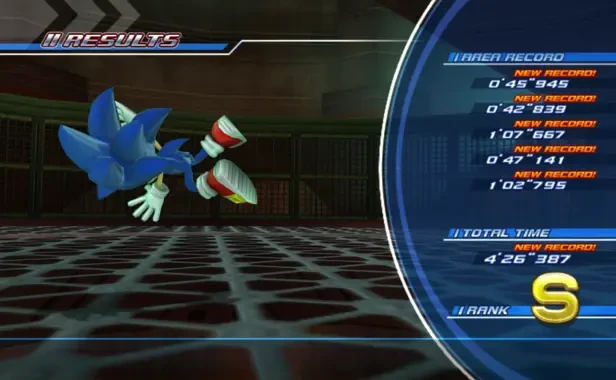
Icon source: https://uxwing.com/sonic-icon/
sranked Eggmanland

I have never had a fursona or been a making OCs gal but the thought occurred to me that if I had a Sonic OC then I might indirectly, accidentally clowned on by an issue of the comics that had a similar bit character or background character and that is making me want to make one
I will do pretty much anything for an extremely tenuous bit
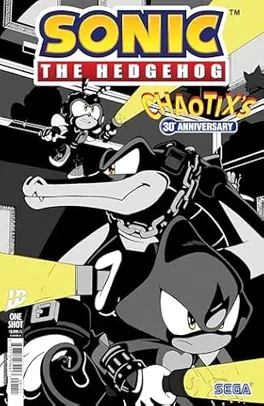
I was disappointed that the Knuckles’ Chaotix designs weren’t used here in line with the the other 30th anniversary comics. Still a fun a little story using the different art styles and character voices to pleasing effect and putting in a bit of light de-colonial subtext on a type of story that generally does not question the institution of the museum itself. Also I feel that the title should have been styled as Chaotix’ 30th Anniversary.
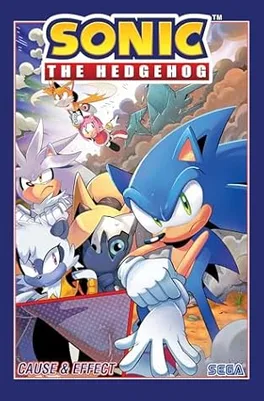
The 2024 annual feels a little insubstantial, mostly being setup for upcoming storylines, but I always appreciate some more of Surge and Kit and Sonic flirting with Knuckles was fun. A lot issues #76 to #78 is also setup but in a way that is picking up the pieces after the big bang in #75 and setting up new directions for things a bit more. Lot of cute moments here too. Belle in her wagon house with Motobud, Amy thinking Blaze is so stoic standing stop the Tornado while she’s actually shitting herself, the big group hug with the girls and the gays and Silver the Hedgehog. All the locations are, of course, gorgeously rendered and I love the race sequence between Blaze and Surge, and the way they use the trails to contrast Surge’s chaotic nature with Blaze’s careful control.
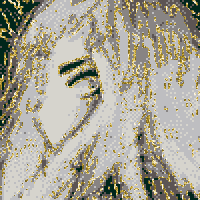
I’ve been playing the “open network test” demo for Sonic Racing: Crossworlds and having a good time. I am not much of a kart racer gal but I did really like Sonic & All-Stars Racing Transformed and that is going to be my main point of comparison. The quick version is that it’s fun but I am not spending 70-bloody-€ on this.
One thing that is immediately apparently compared to Transformed is that Crossworlds is much more chaotic. The game is a constant sensory overload. The central gimmick is that the second lap of each race sends you to a random other track and the last lap of each track also adds new items, hazards and shortcuts to the track, so things are constantly changing every race and items feel more powerful and far less easily dealt with than in Transformed. That game’s blue shell created a minefield in front of the lead player, something that is going to slow you down a little but was avoidable with some care, while Crossworlds has two different items that directly target the lead player and seem nigh-undodgeable. The three different homing attacks also feel significantly harder to get away from with a well-timed boost than they did in Transformed (or perhaps I am just very rusty) with the constant sensory overload of the game not helping there. There are also three different catchup items that automatically send you forward in position on top of the monster truck super transformation and regular boost powerups which also help anyone who has fallen behind rejoin the clusterfuck in the middle of the pack.
Of course my impressions also being coloured here by the fact that I mostly played the single-player mode of Transformed while this demo of Crossworlds, being a network test, has very limited singleplayer options with only one grand prix with three tracks1 to play singleplayer and many more tracks available to experience in online play so I have mostly been sticking to that. I am a bit disappointed that there doesn’t seem to be much character dialogue when playing multiplayer. The grand prix mode assigns you a rival character who will banter with you as you race other racers might talk to you as you interact (i.e. attack each other). I can understand that people eventually get sick of repeated dialogue in online matches but I wouldn’t mind the option to toggle it on and maybe even toggle on assigning other random players (or friends that you are partying up with) as rivals for a race.
The character I’m most interested in terms of these voice lines is Sage, who was only introduced in Sonic Frontiers and hasn’t interacted with most of the wider cast at all yet. I’m curious as to how they handle the context that she exists in outside of the plot of that game. She is not available in the demo, though, and I have been playing almost exclusively as Cream (because Blaze also isn’t available in the demo).
One thing that Crossworlds does have over Transformed is the vehicle customisation. It’s done a little strangely and there’s not a huge amount of depth to it—you are not swapping out spoilers or other individual parts, only the front and back halves of various vehicles—but it’s still fun to play around with. Layering decals on top of the paintjobs does give you some more freedom but even this is pretty restrictive – you can’t overlap decals and they tend have a large transparent zone around the main image that stops you using them to create more detailed shapes. I imagine that this might be intentional to try to stop people making anything offensive with them but I did try my best on my extreme gear design to combine some basic shapes to make a depiction of Rocky behind where the rider stands.
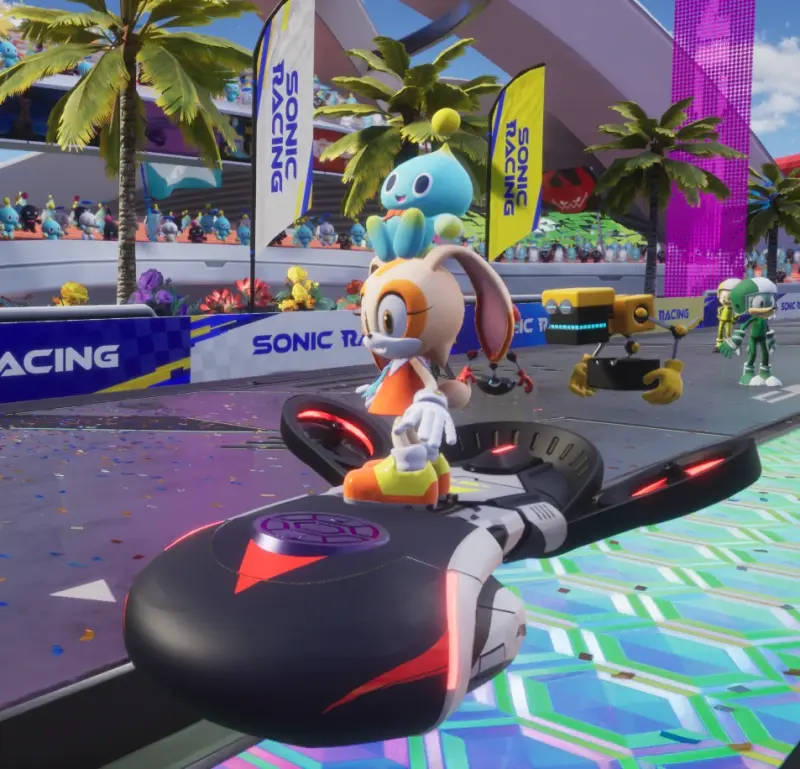
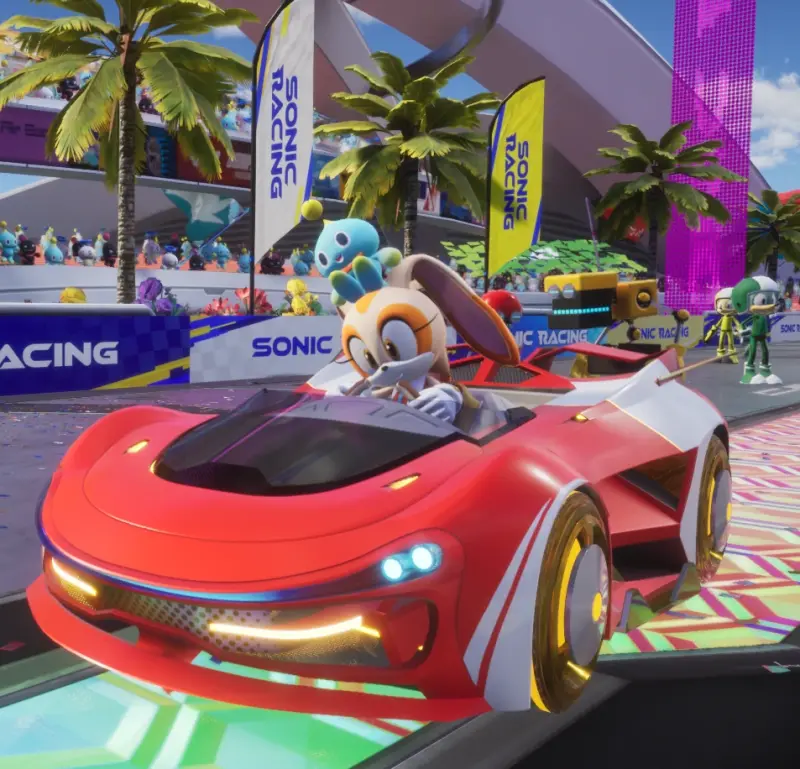
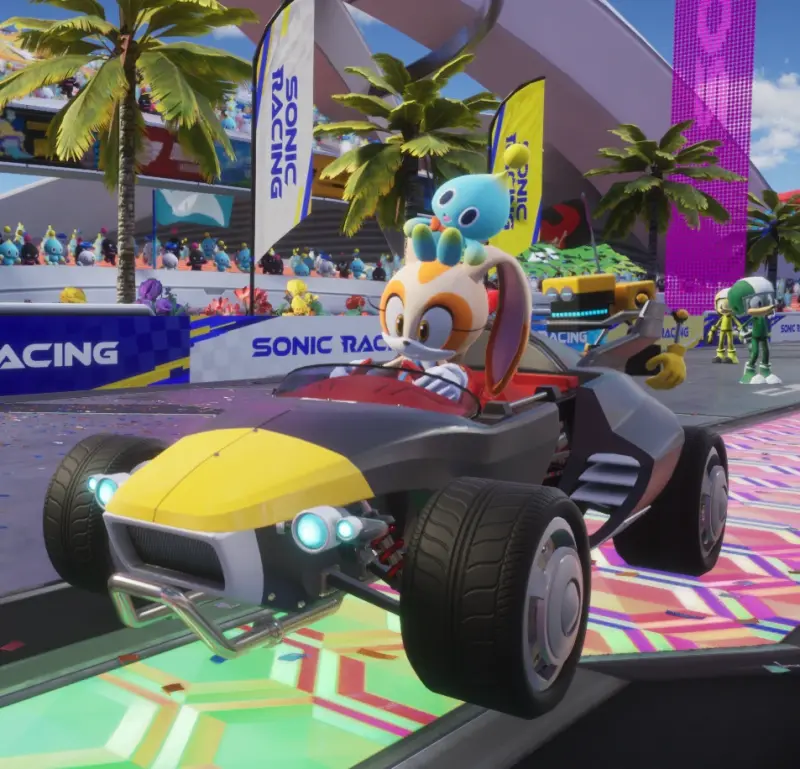
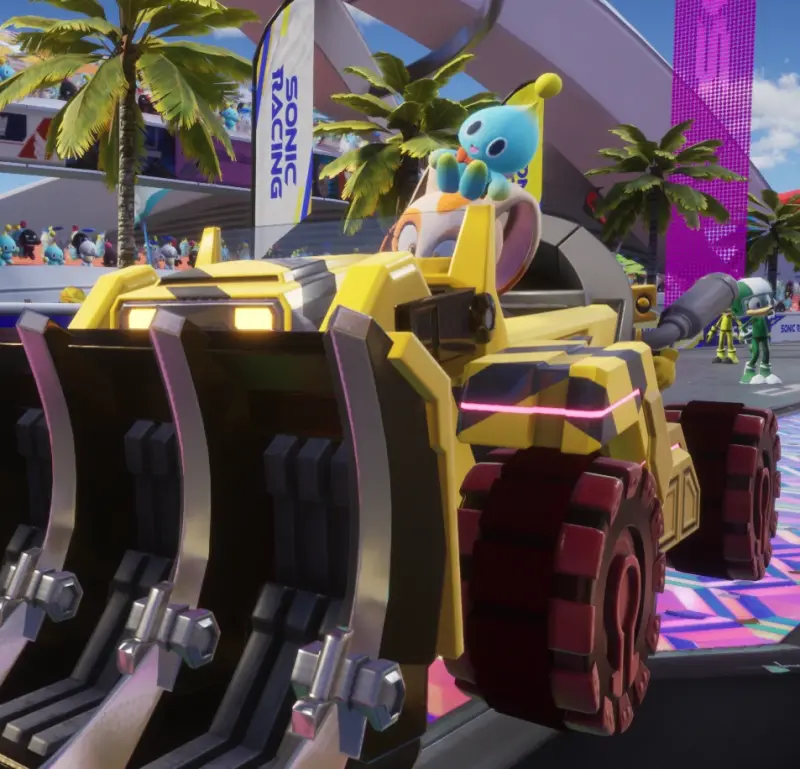
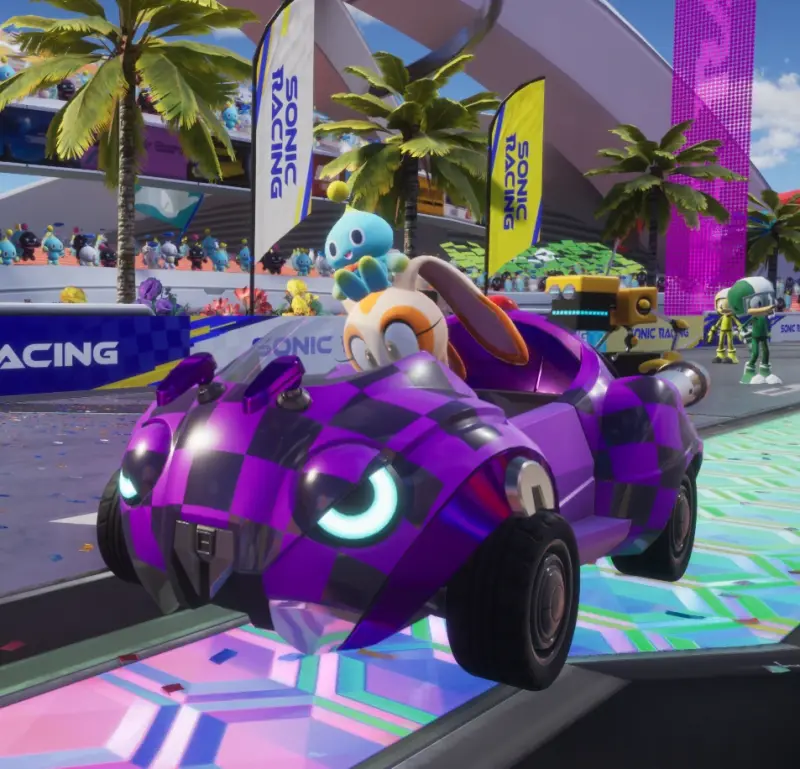
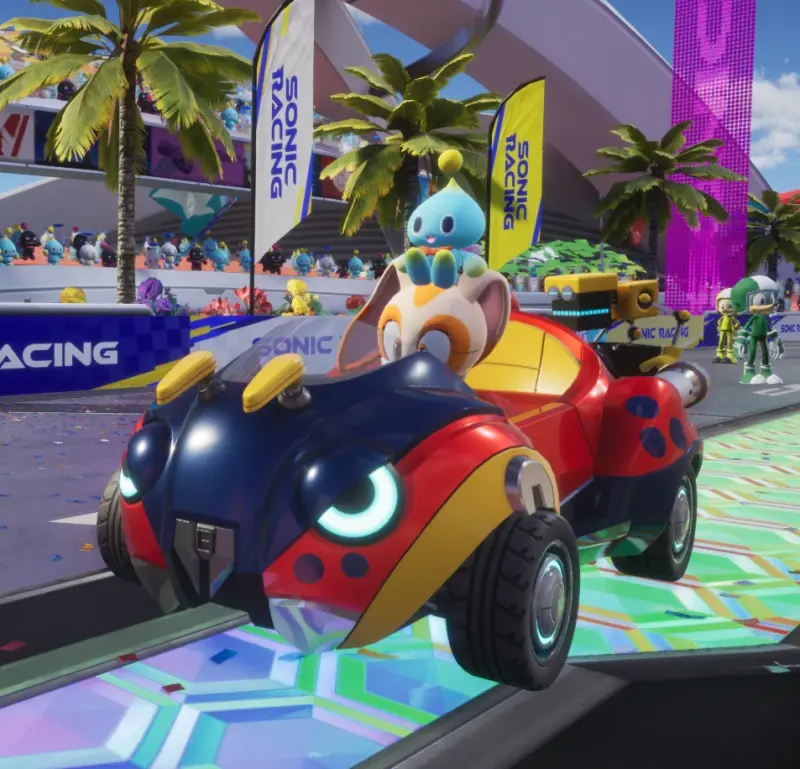
One criticism I have of the car customisation is that when it comes to horns and decals they don’t seem to have given much thought to the Sonic the Hedgehog theming. The horn options sound like they came unaltered from a stock asset pack. There is one labelled “spring” and it is not the Sonic spring noise, just a generic cartoon spring. There is a decal in there of Sonic’s face (which looks quite funny) but really none for rings or Chaos Emeralds? None of the other characters’ silhouetted extra life icons? The “auras” you can apply to the cars also all look like shit and just add to the visual noise of the game.
Your custom paintjob also gets overriden in the game’s time-limited festivals, in which players are put into themed 4v4v4 teams in races with special rules, with the winning team for each race earning points. The festival for the network test is Persona 5-themed with Team Joker, Team Violet and Team Mona. This sounds like a Splatfest but it is not—it’s a battle pass. You do not choose a team you are randomly assigned one every race, making them utterly pointless other than what colour your car is going to be for the next five minutes and points simply go to unlocking Persona-themed decals that I will never use. Joker himself, one of the future D.L.C. characters for the game, was also temporarily unlocked for this which just highlighted how much of a lazy cashgrab the cross-promotional characters are, lacking any voicelines or even a full set of animations. From what they’ve shown of the game so far the only voiced D.L.C. character is going to be Hatsune Miku, the one that they don’t have to pay a voice actor for. Even the Werehog pre-order bonus doesn’t have any lines and he’s just Sonic with a gruffer voice. They have Roger Craig Smith voicing Sonic and Omega in the game already could they not have him do this too at least? But if you want to race as a completely silent Spongebob Squarepants be sure to buy the season pass.
Also the final lap music for a lot of stages is really bad.
In keeping with the gimmick of opening portals between tracks mid-race the fourth and final race of each grand prix in the game is one lap each from the three previous tracks. ↩

I exhibited at a showcase for local game makers yesterday. It was the first time I had done something like that and it was extremely fun and utterly exhausting. Working on games is an occasionally hobby; I don’t intend to make it my job and I haven’t worked on any game projects since the game jam last year, but I dusted off Snolf Robo Blast 2 and Conway’s Garden and set them up with some controllers for people to try out.
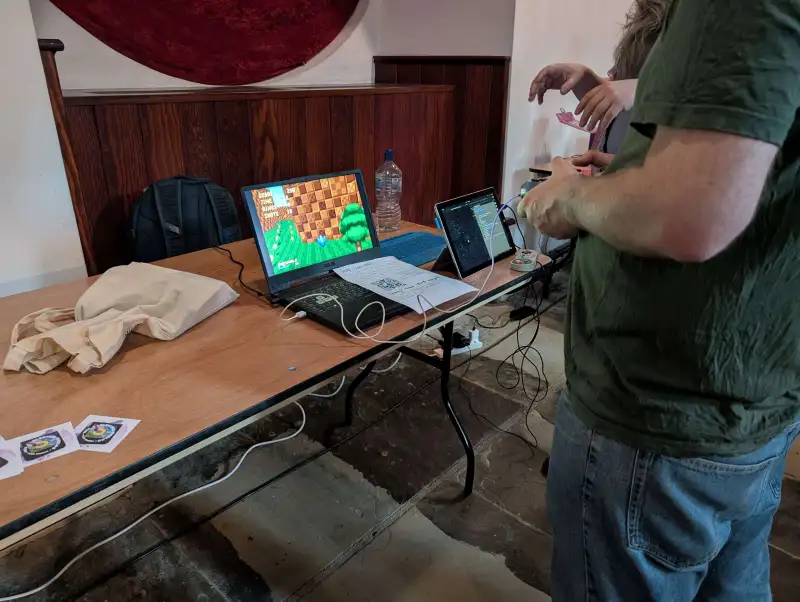
I had not thought about how exhibiting these would work before the event but I quickly realised that I was going to have to give a lot of context to people as to what they were playing. The vast majority of people attending never heard of Sonic Robo Blast 2 before so I had to give a quick rundown to everyone on what it was and sometimes the concept of fangames and mods.
Even with that explained, though, it became apparent how awkward it was to try to convey what the mod is doing when people seeing it do not have a context of the base game and how the mod is creating an experience on top of that. They are coming in and seeing and playing this game for the first time and expecting it to be a coherent whole, not this deliberate awkward layer on top of a base game. You don’t have the context that the joy in it is that you are playing the game “wrong”, layering a control scheme and method of play that the world was not intended for. Many people when seeing it as a golf-type thing started looking for a hole or guidance on where they are shooting for. The levels have a fairly legible linear structure when played normally, but when you have never seen them before and can freely shoot yourself much farther and higher than the levels for designed for, bouncing every which way, it is become very difficult to parse the structure of the space. More than one person suggested there should be guiding arrows of some sort to help.
Some people, though, did gel with it straight away and were delighted by blasting Snolf around, which was really nice to see. I was quick to give credit to the SRB2 team for the game itself and Dr. Melon for the concept. A line I fell into saying that got a laugh from a lot of people is that “all I did was make the controls worse.” A lot of people also got a kick out of it when I pointed out that the game was technically an extremely heavily modified version of Doom. Some people did have more of a concept of an antigame and compared it to QWOP and Getting Over It when I tried to explain the awkwardness of it not being entirely unintentional and the other game makers there generally got it and found it interesting. There were a few parents who brought children, including a Sonic fan or two, and they gravitated over to it being one of the more brightly coloured, exciting looking things on display, only to get pretty frustrated with it. For the kids at least I did quickly quit back to the main menu and restart the game with normal Sonic so that they could have a bit of fun trying it out and gave on the details of SRB2 to their parents if they were interested in it, pointing out that it was free. I think if exhibiting it again it would be useful to have a second computer set up with the unmodified version of the game, both to give context and to allow any child who sees Sonic and gets excited to play something that would actually be fun for them.
Similarly for Conway’s Garden I had to let people know that there wasn’t really any goal or point to it and it was more of a piece of art and a challenge to make something in a tiny amount of code. I had the code open in a second in a second window to the side so people could see how small it was for themselves. A lot of people, quite fairly, lost interest in it quickly, but some people were fascinated by the highly condensed code and the idea of tweetcarts and Pico-8 itself and a surprising number of people were already familiar with and recognised Conway’s Game of Life.
There was one man in particular I had a lovely chat with who was unfamiliar with games generally (he had to ask to clarify if “mods” was short for “modifications”) but enthusiastic about discussing the things on display as art. He said the mix of chaotic generation with the player’s simple, deliberate movements in Conway’s Garden reminded him of Joseph Beuys’s I Like America and America Likes Me and immediately recognised the Sisyphean nature of Snolf.
I don’t know if I will do anything like this again any time soon (and I won’t be working on anything new to show for the moment) but I had a great time and met some very cool people.

What planet is Sonic the Hedgehog from? That depends on which version of the character you’re talking about. The earliest bios from Sega imagine him as simply living on more or less the Earth as we know it, giving his place of birth as Christmas Island. When the series was published outside of Japan a more elaborate background was painted, putting him on a planet called Mobius inhabited by mobians—anthropomorphic talking animals—and ruled by the evil dictator Dr. Robotnik. Sega were similarly lose with canon when it came to licencing, allowing the details of the world to be filled in very differently in the various adaptations.
In Archie Comic’s Sonic the Hedgehog Mobius is a post-apocalyptic Earth in the far future, a background shared by Sonic the Hedgehog: The Movie’s Land of Darkness, while in Fleetway’s Sonic the Comic the Earth as we know it exists as a parallel dimension to Mobius, with characters sometimes travelling between the two1. Sonic X and later the 2020 Sonic the Hedgehog film also feature Sonic travelling from an (unnamed) parallel dimension but then have him be taken in by a human family on Earth, where the bulk of the action takes place.
But this divide between Earth and Mobius never really existed in the games, at least as far as the Japanese versions were concerned, and starting with 1998’s more narrative-focused Sonic Adventure Sega started trying to unify things a bit. The English localisation featured almost nothing from the previous Western Sonic canon: No mention of Mobius, badniks or roboticisation2 and with Sonic and friends being just a few talking animals in a world made of mostly of ordinary humans. This depiction of the world and Sonic’s placed in it held in the games for the next decade, as far as Sonic Unleashed in 2008.
The Sonic games of the 2010s, though, shied away from narrative focus and tried to steer the series in a more cartoon-y direction. These games vastly cut down on the size of the secondary and incidental cast, not only dropping background N.P.C.s entirely but also vastly trimming the size of recurring cast of mobian3 characters, sometimes only having Sonic himself and Tails have any major role. Still, one could imagine those teeming human cities just off-screen somewhere. That depiction of the world was not seriously challenged until 2017’s Sonic Forces.
An big selling point of Sonic Forces was that it had a character creator, finally allowing you to play your own Sonic O.C. in an official game4! Your avatar in the game starts off as an ordinary, frightened, mobian who rises up from the crowd to fight against the Eggman Empire alongside Sonic and his friends. For this narrative to work then, your furry O.C. must start as someone ordinary. Therefore mobians must be ordinary. There wasn’t really such a thing as an ordinary mobian in previous games. Barring the ancient echidna tribe shown in flashback all the way back in Sonic Adventure there had never really been furry background N.P.C.s. No generic anthropomorphic animals. They were all important, named characters. For the avatar character to rise up as part of the masses and become a hero they first need to fit into the masses, and thus Sonic Forces came with a colossal shift in how the world of Sonic the Hedgehog was presented: A world of animals under the thumb of Ivo Robotnik, the sole human in the game - something that aligned closer to Sonic the Comic than any of the previous games5.
While the text of Forces itself doesn’t address this change directly series producer Takashi Iizuka made comments to the effect that the there are two different worlds: One that is home to humans and the other that is home to mobians. This, frankly, does not remotely make any sense if you try to fit it with previous games and this was not some sort of reboot, either! Sonic Forces directly references several earlier games. This was coupled with another retcon where the game tries to reframe the younger version of Sonic, returning from Sonic Generations, as actually being from another dimension6 rather than being from the past, suddenly putting Sonic Mania and by extension all the Mega Drive games into a different continuity to everything else and making a complete mess of everyone’s understanding of the series. The people who maintain the Sonic the Hedgehog Fandom wiki started splitting off every character into two different pages: One for the primary version and one for the “classic” universe version. It was, in short, a complete disaster if you cared about the canon of a series of children’s computer games.
Something good did come of this, though: The long-running Sonic the Hedgehog series published by Archie Comics had ceased publication in 2016, one year before Sonic Forces was released, and in the year that followed Sega negotiated a new line of comics with IDW Publishing instead. And while Ian Flynn returned as head writer, having helmed the Archie comics for a decade, the new series abandoned the continuity (and legal baggage) of the old comics and started fresh with a backstory much more closely aligned with that of the games and a plot following on directly from Sonic Forces, keeping its status quo of a world full of mobians.
And the IDW comics are really good! Ian Flynn, Evan Stanley, et al. have a deep love for the series and are able to consistently deliver endearing, interesting and fun interpretations of the characters. It has made me warm up a lot to parts of the cast I previously disliked and introduced wonderful new additions like Whisper and Surge. It also strikes an amazing balance in tone, managing to deliver just the right amount of self-serious edginess in its stories while maintaining its warm, bright, colourful world. It successfully managing to keep the good parts of the ow the Edge 2000s without whollly abandoning the cartooniness of the 1990s and without the layer of ironic detachment and self-cringe that haunted the series in the 2010s. I maintain a reading order if you want to have a go at them yourself.
And as the comics became more aligned with the games the games have in turn became more aligned with the comics. Characters from the IDW comic have started appearing in mobile games and Sonic Speed Simulator (the official Sonic Roblox game) and were mentioned in 2021’s Sonic Frontiers. This is because with the success of the IDW comics Sega have more and more let the lunatics run the asylum. Flynn has been writing more and more for the series, from promotional material and animated shorts to eventually being the writer for the games themselves, penning the scripts for Sonic Frontiers and Shadow Generations. And being someone who does care about the canon of a series of children’s computer games he has taken upon himself to sort out the lore mess.
Under Flynn Sega has put out a series of in-character Youtube shorts called Tailstube, which act not just as promotional material but also an ongoing lore-clarification series7 with the very first episode trying to lay out as plainly as possible while staying in character: All games take place on the same planet. Humans and mobians8 just mostly live in different parts of the world. The Mega Drive games are part of the main canon. Please forget those retcons. Please go fix the wiki pages.
And the games have embraced talking about their history again, acknowledging backstories and characters who hadn’t been mentioned in a decade. The extended human cast, particularly those related to Shadow’s backstory, exist again. Maria and Gerald Robotnik feature in Shadow Generations and the GUN commander9 was in the game’s promotional short Dark Beginnings. But the IDW comics, their timeline seemingly stuck in a pre-Sonic Frontiers limbo, has yet to feature any human characters outside of Eggman. Even when using locations that were shown in the games to be populated by humans the comics will show them as being full of mobians or simply empty instead. There still seems to be a reluctance in the series to portray a wider human cast, but that might be changing!
Sega recently licenced a new manga series called Sonic and the Blade of Courage where Sonic returns to the world of humans and teams up protagonist Yuuta, an ordinary boy, to fight Eggman, who has been going around using an ancient cursed idol to turn (human) people to crystal. In the third chapter Sonic takes Yuuta to Spagonia10 to meet Tails, the only mobian character in the comic so far other than Sonic himself. Spagonia is, like Yuuta’s home Metro City, full of humans. This stands in contrast to the last time Spagonia was shown in the IDW comics, with Sonic and Blaze the Cat on a sightseeing holiday running through empty streets.
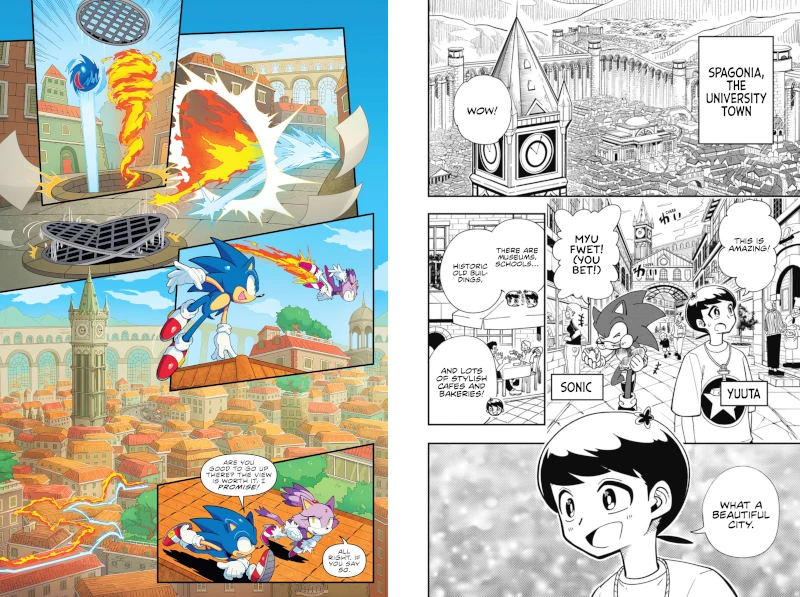
Does this mean Sega is open to portraying more humans in the series as a whole again or is it compartmentalising aspects of the franchise to different media? Will any new Sonic mangas barred from having background mobians while IDW stays devoid of other humans? It would, I suppose, contribute to giving different parts of the series their own identities.
That said they have also introduced a new human character in the most recent Tailstube (which is also set in Spagonia): Professor Victoria11. And Sage, Eggman’s A.I. daughter from from Sonic Frontiers, is joining the IDW cast in issue #8412 which means that that status quo is finally being moved forward as well.
In any case I really enjoy the direction that the series has gone in recent years and I’m looking forward to seeing how it continues to evolve.
Sonic met Tony Blair once. ↩
The one thing that did seep through was the name of the main villain: Originally called Dr. Eggman he was known as Dr. Ivo13 Robotnik outside of Japan. Sonic Adventure uses both names, with Robotnik being his real name and Eggman being an insulting nickname that Sonic and other characters call him (that Ivo eventually decides to reclaim and own). ↩
While the term “mobian” is not used in any current official Sonic media I am going to keep using it so that I don’t have to type “anthropomorphic animals” a dozen times. ↩
I am going to ignore Sonic Boom entirely. Don’t worry about it. ↩
Presumably a third one compared to the one the humans and the normal mobians are from, unless Earth and Mobius are just meant to be different planets in the same dimension? Who knows? None of it makes sense anyway. ↩
As expected they still don’t use the word mobian but strangely they also seem to be awkwardly avoiding the word human too. ↩
The GUN commander has a name now too: Abraham Tower, the same name that Flynn used for him in the Archie comics. ↩
Spagonia, introduced in Sonic Unleashed, is the Sonic version of Italy. Not to be confused with Soleanna, a city state based on Venice from Sonic the Hedgehog 2006. ↩
A.K.A. Tori. She was actually originally teased in the very first episode of Tailstube and then again in one of the trailers for the third Sonic movie before finally making a proper appearance three years after her original cameo. Fans have speculated that she may be Maria’s sister and Ivo’s cousin due some new background material in Shadow Generations and tori being the Japanese word for chicken. ↩
I am very much looking forward to seeing the angst this will cause in Eggman’s good-guy robot puppet daughter in the comics, Belle. ↩
Usually Ivo Robotnik at least. He was Julian Robotnik in the Sonic the Hedgehog cartoon that fans call “SatAM”. ↩
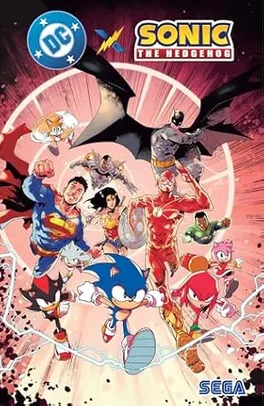
Even putting aside my dislike for the naming scheme that simply labels it as a cross promotion and nothing else—art is ever more stripped to branding exercises not even trying to promise substance—I find it so strange that the title uses the brand name DC itself and not the Justice League. Is the name of the company really more of a draw or recognisable than the actual Justice League themselves? Do people get excited just hearing “DC”?
Still, this is about as good as it could have been. It’s very pretty (other than the superhero costumes the Sonic characters end up in which look atrocious on them), it has a snappy pace with each issue establishing a new set of ideas to play with before quickly moving on to set up the next one, and it has a few good gags and some charm to it. I especially like the bit in the first issue of the Justice League asking how the hedgehogs got their powers only for Sonic and Silver to say that they’re just normal men.
I was rambling to someone the other day about how endearing I find the names Biolizard and Finalhazard and how someone spoke English natively would probably not name something that and they suggested maybe Biolizard was meant to evoke Biohazard in the first place which I hadn’t considered and makes it make a lot more sense but in a way that still I don’t think scans very well to a native English speaker lol

Sonic Frontiers: The Final Horizon was a fascinating coda to Sonic Frontiers, a very experimental expansion to a game where Sonic Team was already going outside of their comfort zone to do new things with the series. The world map threw together Only Up!-esque climbing challenges, playable Tails, Amy and Knuckles very different movesets to how they have worked in past, an absurdly fast and powerful dropdash for Sonic in 3D and wildly more difficult combat than the base game. I streamed it to some friends when it came out and one of them remarked “this is the least designed game ever made.” I couldn’t really disagree with her. So much of this is janky and half-broken in various ways and it was incredibly fun. It made me hopeful that Sonic Team was happy to keep experimenting with what worked for the series and keep allowing more player freedom in future games1.
In keeping with this, while the levels in the base Sonic Frontiers were almost entirely reused from previous games the ones in The Final Horizon were much more experimental, being very clearly thrown together with very basic assets rather than having their own sculpted level geometry but also with much fewer guardrails and much less guided than a normal Sonic level and with new, bespoke mechanics and side missions, some of which required more slow, careful exploration than high-speed platforming.
Early on, while playing one level, 4-D, I noticed an exclamation mark appearing over Sonic’s head in certain locations, accompanied by a beeping. You cans see it at about a 1′18″ in in this video. It would turn red and beep faster as I approached a certain spot. When I saw this the first thing that came to mind was Knuckles’ emerald-hunting missions from the Sonic Adventure games and thought it might be part of one of the level’s optional missions. I actually had a bit of trouble finding the source of the beeping but once I zeroed in on it and finally found it I was greeted to Sonic being blown up into the air by a mine, his hands held down protecting his singed arse. This was a very sudden gear-shift in my head and in my confusion, still processing what I was seeing, I screamed “I’M MARIO BURNT ASS?!”2 into my microphone, which caused myself and my friend Ruby who was watching to double over laughing till we couldn’t breath and then Ruby set my display name on the Discord server to Mario Burnt Ass for a month. It was funny.
That’s the story.
Thanks.
Because the first thing it made me think of was Mario’s lava burn damage animation from Super Mario 64. ↩
Incredible that today’s Sonic comic ends with the heroes teary-eyed celebrating a successful revenge-murder and no one suggests that this might be a bad thing.
lesbian couple going on revenge-murder mission and also their supportive friend Silver the Hedgehog is there
the vibe here really comes off as lesbian couple going on adventures and also their supportive friend Sonic the Hedgehog is there
which is, frankly, the ideal relationship dynamic

This list is incomplete; you can help by expanding it.

Picmix is a website for making GIF collages. If you’ve seen square GIFs of anime characters drowning in glitter and surrounded by rapidly animating icons and text it was probably made with Picmix. The typical aesthetic leans extremely girly and overloaded; the digital equivalent of a scrapbook page covered in magazine cutouts, glitter and stickers. It is very charming (though sadly the current front page of the site seems to be flooded with AI art).
Last year on Cohost (R.I.P.) Freja asked me what my favourite planet was and my reply was “♃”. This is mostly just vibes and associations with fictional characters that I have great fondness for: Lita Kino from Sailor Moon1, Jupiter from We Know the Devil, and it would be nice to round this out with a third example but actually it’s only those two2. But also the planet is cool and I like the astrological symbol.
But thinking on those vibes, that loose collection of associations that still resulted in an immediately clear preference it made me want to make something to tie together these Jupiters: The planet, the Sailor and the Devil-knower. And even though I had never actually used Picmix before that type of silly, sparkly, collage seemed like just the thing.
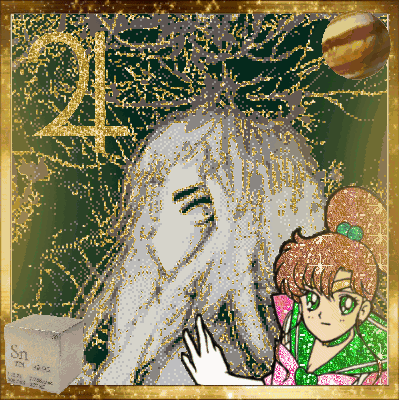
The Sailor Jupiter, rotating planet and glow around the edges were pulled from Picmix but I actually put it together using Aseprite. This is an artisanal GIF collage. The central Jupiter picture (that I also use as an avatar now) was made by putting the cover art for We Know the Devil through Luna Pic’s glitteriser. The little tin sample cube is because tin is the planetary metal associated with Jupiter in alchemy. I actually have a similar cube of copper in my house next to a replica Ea-nāṣir complaint tablet that I have on my wall. Perhaps I should get a tin one as well.
A little while later I decided to make a similar collage for Blaze the Cat, my favourite Sonic the Hedgehog character.
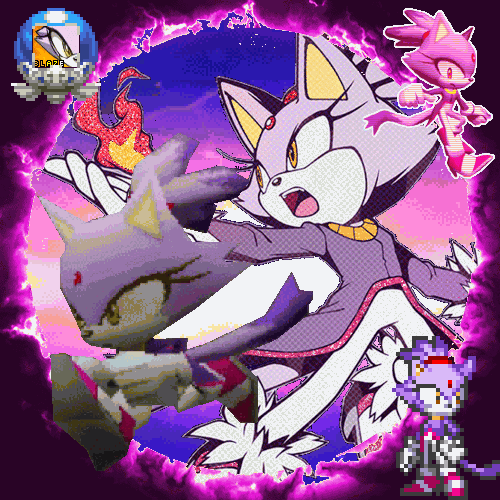
This one pulls from Picmix, The Spriters’ Resource and a GIF of Blaze running that I do not know the original source of that I cut the background out of frame-by-frame.
I never returned to making these but it was a lot of fun and perhaps the urge will strike me again at some point.
And let me know if there’s any other Jovian women that I should check out.
I have no idea what original names of any of the characters are outside of Usagi/Serena. The part of Sailor Moon that matters to me is the English dub that I watched growing up. ↩
Apparently there is a female villain in Pokémon Diamond and Pearl named Commander Jupiter and maybe I could get obsessed with her and add her to the list but also I don’t particularly want to play those games. ↩

Steam Grid DB is a website that hosts artwork for customising game libraries. I learnt a little while ago that it has a tool called Boop that lets you apply art to Steam games much faster by clicking a button directly on the website.
This reminded me that I actually used to make quite a few custom banners for games on Steam myself and I decided to upload my old work to the website. You can find those on my Steam Grid DB profile and I will include a selection of them here:
Some of the first ones I made were a set of matching banners for Half-Life 2 and its episodes. I’m still pretty happy with these.
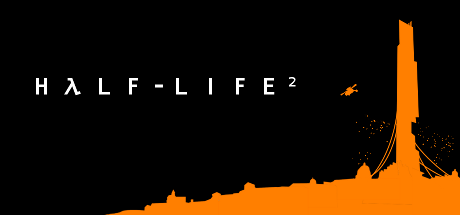
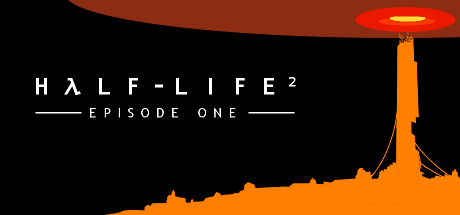
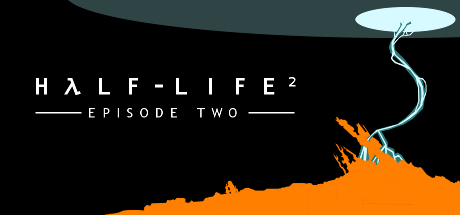
I made some for a few classic games, usually from a still of the title screen, sometimes with some variants.
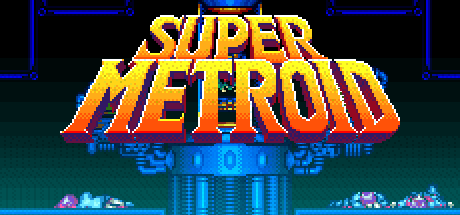
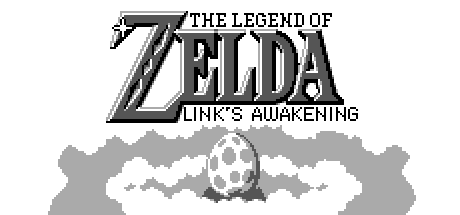
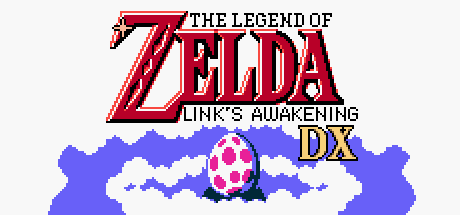
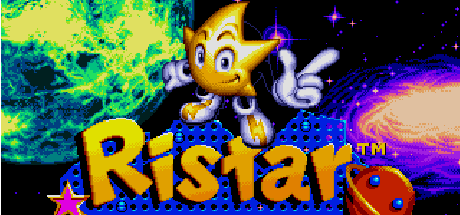
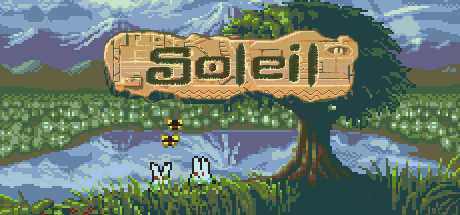
At the time I had a Retrode and would dump my own game cartridges. Two of the old Mega Drive carts I had were two different 6-in-1 game packs, so I decided to make custom artwork for them too.
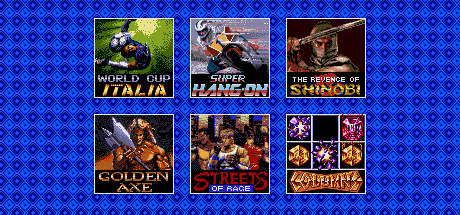
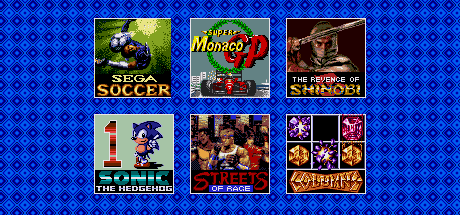
And of course some ROM hacks.
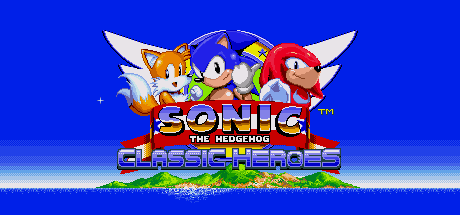
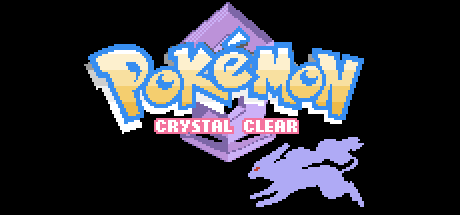
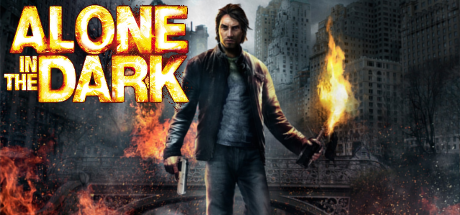
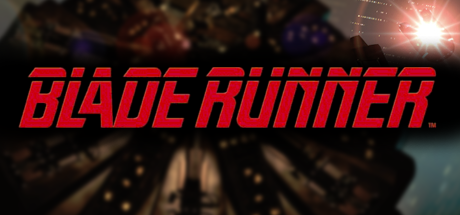
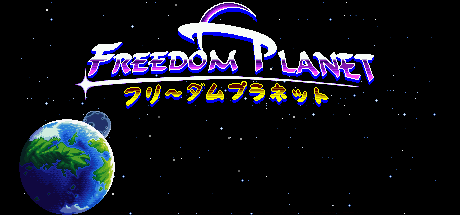
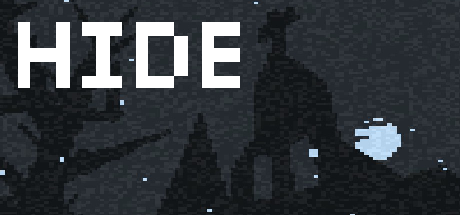
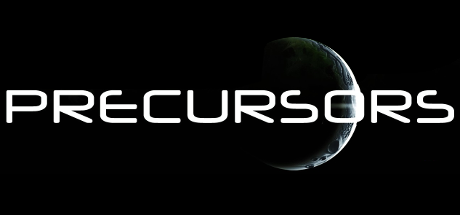
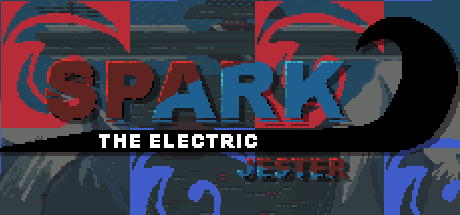
Some games I had to submit to Steam Grid myself because they didn’t have the games listed at all. These all have links if you click on the banners. The Monokuro: From Here and Back is actually new and I haven’t gotten around to playing it yet. The process of uploading these banners made me want to make a new one and I had the game added as a shortcut on Steam without any artwork. Somari 3D Blast 5 wasn’t accepted by Steam Grid DB, sadly.
These are a pair of banners that I made for The Legend of Zelda: Twilight Princess for the Gamecube and Wii versions, respectively. It was a little private joke and I didn’t bother submitting them to Steam Grid DB.
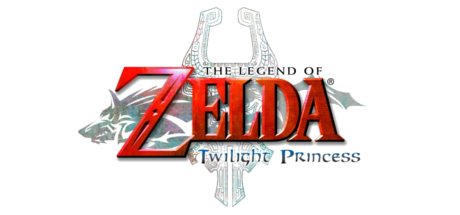
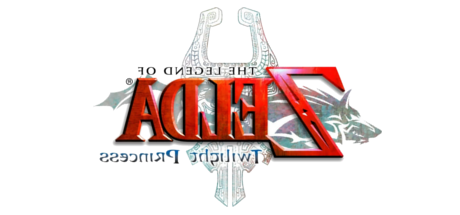
‘Snolf the Golfball’ (2021) by oakreef (SRB2 Mod)
Turns ‘SRB2’ into a Golf game!
https://mb.srb2.org/addons/snolf-the-golfball.591/
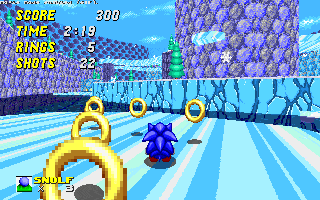
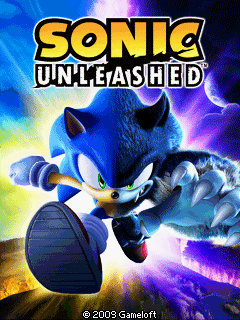
There are parts of this that almost work as a budget, janky version of Sonic Rush. The boost works, the art is rather nice and the renditions of Unleashed level music are surprisingly good. But then there are no sound effects and the music cuts out after a few seconds (I don’t know if that’s an emulation problem or if the game is just like that) and you run into the brick wall that is the utter shambles of the jump physics and collision detection that makes platforming in this game barely manageable. I guess it’s impressive that this ran on mobile phones at all but it constantly feels like it’s coming apart at the seams.
It is, mercifully, short. Only four of the locations from Sonic Unleashed are here and all the hub worlds and everything else extraneous is gone. Even the plot is barely there. There are some brief bits of dialogue at the start of levels between Sonic and Chip that are lines taken from the main gain, divorced from their original context. Other than that there all there is is some interstitial titles between levels that were clearly written by someone who was not given much if any guidance on what the story in the game is meant to be. It refers to Sonic in werehog form as just “Werehog” as if it was a name and talks about Sonic going to “Athens, Greece” instead of Apotos (which is actually based on Mykonos) even though the title cards for levels actually do use the made up names for these places, correctly calling it Apotos. This itself is weird because that’s not the name for the level in the console versions of the game, that’s the name of the hub area. The level is actually meant to be called Windmill Isle! The ending screen also just goes on a weird ramble that “We cannot live without the night, we all must sleep, we all must rest. Darkness is a part of our world, just as much as light.” Sure, great!
One last funny note is that after you beat each boss you get a Chaos Emerald. You might think that this means you are going to get all seven before you fight the final boss and there will be a Super Sonic section, but when you get to the final boss you only have five of them and then after defeating it the game just gives you two more and then ends.
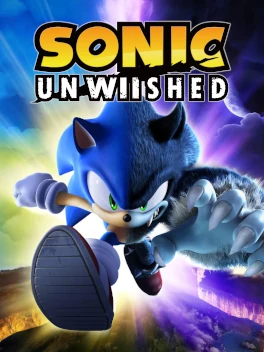
It’s always interesting to see different takes on the same core idea. I knew when Unleashed Recompiled was released that I would be playing this alongside that fancy new PC port of the XBox 360 version. This Wii version takes the core concepts of the game and executes them in very different ways and it’s a lot better than I expected!
Being the budget version of the game a lot of fat is trimmed. Hub areas in each country are replaced with a more visual novel-style menu interface, using static renders of locations and characters from the PS360 version for visuals. This saves some time compared to running around and talking to people in the other version but is still tedious and fiddly and you do have to talk to people a lot more to progress. There is one part in particular after getting to Spagonia and Mazuri where you keeping having to go back and forth talking to different characters and watching cutscenes (FMVs that also use the in-engine cutscenes from the PS360 version as pre-rendered assets) for so long that I was begging the game to just let me play a level.
But when I actually got to play the levels they are quite fun! I actually prefer the werehog in this game to the PS360 version. There are motions controls if you would like, and it is fairly charming to do left and right hooks to attack or swing your arms rapidly to climb, but they are a bit much to play the whole game with, especially when there there is also fairly involved movement and platforming on top of it, but the game offers full support for the Gamecube or classic controller too. Even on the more standard control scheme the left and right punch are still bound to separate buttons. This is probably a holdover from the motion controls but I honestly enjoy it. It means you have to alternate left and right shoulder buttons to do combos making it just that little bit more engaging than just mashing attack repeatedly. Enemies also mercifully die much faster in this version.
I also quite like the werehog’s general movement. There is a real feel of weight and momentum in the way you skid while turning when running (even if having to double tap a direction to run is fiddly) and I also like you hold X to grab things rather than just tapping it. It gives you that little feeling that you’re gripping onto it yourself.
The night stages are also divided up into sets of three smaller acts rather than one big level. This puts them in more manageable chunks and means you lose less from a game over (which are a bit more likely in this version, more on the lives system later). Each act also takes place is a pretty distinct area. In Dragon Road (set in Chun-nan, based on China) the first area takes place in an area with lots of shrines and pagodas, similar to the PS360 version of the stage, but the two subsequent acts have you ascending a waterfall and then running across the Great Wall.
For the daytime stages the motion controls stop being a fun gimmick and are really just a hindrance, but the control scheme for more standard controls work just fine. The day stages are an interesting and very different take on the boost gameplay. How that should work was not set in stone yet and it feels like a real road not taken for how the series could have worked. Boost being discrete bursts of speed rather than a meter you drain continuously was strange to me at first but works pretty well. You really have to think much more about timing when to boost because you are committing to it and it can send you off a cliff that you can’t stop running towards. That along with the system where you are rewarded with boost for action chains and drifting feels like the game really rewards constant activity and hitting everything in the level just right. Rings upgrading your boost gauge with extra charges also gives more incentive not to just collect rings but hold on to them which later games don’t really do. It’s really rhythmic and intense in a different way to the boost formula I’m more familiar with. I am a bit tired of these games at the moment but I’ve definitely tempted to come back and practise the daytime levels more and get to grips with what a perfectly executed level feels like in this game.
I did think the game was a bit unforgiving with lives, only giving you three attempts at a level before a game over with no way to collect more, but what I had missed is that extra lives are actually a permanent upgrade in this game that you have to get elsewhere, but once you get an extra life you have that extra life for every subsequent level that you play. This is what the sun and moon medals are for in this game; they don’t gate progress like in the PS360 version. They also aren’t found through exploring, not directly at least. They are gotten through getting good performance in levels. For daytime levels this does just mean going as quickly as possible and beating certain par times. For the nighttime levels though there are three separate criteria for earning them for each level: You get one for beating the level under a certain time, one for getting enough “force” (experience points, basically) which can be found in high amounts throughout capsules hidden in little nooks and side areas—thus making those medals your reward for exploration—and one for getting enough rings, which just means being careful to hoover them up as you progress normally. This gives you some leeway in how to play levels if you still want to get some sun medals without worrying about getting them all.
What the sun and moon levels gate in this version is side areas in temples with extra puzzles. These puzzles require you to change back and forth between hedgehog and werehog and use their different movesets to peal back the layers of the puzzle in a way that you never do in the other versions of the game. And it is optional, though one might struggle in the last few levels without the extra lives. I certainly did before I realised that I had missed this entire system.
The final boss is also better in this version I think. Certainly the Punch-Out section is more fun than the equivalent part from the PS360 version. The Super Sonic part is a bit dull but certainly a lot less janky than those parts often are in this series.
Like its alternative version this is not without major flaws but I was surprised by how much more I want to go back to and fully get to grips with this version, this different angle on the series.
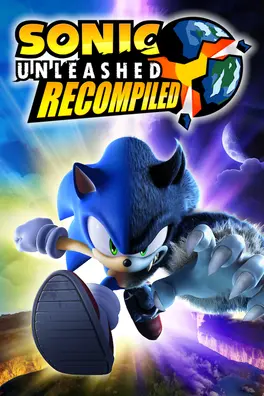
It’s interesting playing this after Shadow Generations; going back to the first boost game after the most recent one. They landed on a winning formula but there has been some clear and needed refinement over the years. The boost, homing attack and air dash all being the same button is a less than ideal and it lacks a good way to half your momentum quickly, the stomp transitioning into a slide when you’re moving quickly rather than stopping you dead line in later games. But it’s at its core familiar and fun territory for the day stages. Very familiar, actually, as I’ve played all of these levels before in Sonic Generations through mods and only now am experiencing them in their original context. It’s an interesting! There are definitely some gaps in the version presented by the Unleashed Project mod where the toolkit available to Sonic Generations modders could not replicate the original gameplay. On the other hand the original versions have fiddly and surprisingly unforgiving quick time events, so there are trade-offs whichever way one plays these levels.
For the night stages Sonic the Werehog is fairly fun. To begin with anyway. As the game wears on the combat increasingly overstays its welcome and while the platforming challenges can offer a breather they are generally not very interesting. Thankfully Unleashed Recompiled includes an option to turn off the battle music which helps with one of the more irritating aspects of the night levels. As a final nitpick I found the fact that all these Eggman’s robots and Dark Gaia monsters just hang out together and apparently work together in the night stages very odd. It feels like there should be a stronger dichotomy between the two types of enemies or even having them fight each other. Watching monster infighting is always fun!
Levels of both types can be pretty mean with bottomless pits and the like but the developers seemed to have at least noticed this and often put extra lives shortly after checkpoints before difficult sections.
Outside of the core gameplay the game does leave a lot to be desired. The world tour was a cute idea but the execution is tedious and a bit racist. It’s hard to ignore how western countries get towns and cities with levels that have you running through streets with human inhabitants, while elsewhere has small villages that you quickly leave to run through empty ruins (which you are also smashing up a fair bit), any significant construction or urban civilisation in these places being relegated to ancient history. When you arrive in Mazuri, based off Mali and other parts of Africa, you find yourself in a mudhut village devoid of any modern technology other than Eggman’s invading robots and one of the first people there you can speak to says something to the effect of “You’re looking for a professor. What’s that? Sounds tasty!” The one blessing is that when people are voiced they all just have American accents rather than any attempts to imitate different nationalities.
Even aside from all that going around and talking to people in general is a pain. Hub areas are littered with people but Sonic moves so sluggishly in them and no one ever has anything interesting to say, but there are times when you have to go around and mash buttons to advance their dialogue to the end in order to progress. That or go back to Professor Pickle’s lab fifty times only for him to tell you to go back to where you just were. It was only very late in the game that I realised that sometimes NPCs will give you challenge missions so there is actually reason to talk to them beyond reading them say inane crap. The fact that I had stopped talking to them whenever I didn’t have to meant I had probably missed a lot of those and did not help with my medal deficit.
You have to collect sun and moon medals to unlock stages and progress in the game. These are found scattered around both hub areas and levels and as long as you keep an eye out for them and make sure to collect them you can keep ahead of requirements for most of the game. I knew this going in and tried to be diligent but I still ended up hitting a brick wall on getting to Adabat (based on Cambodia and other parts of Southeast Asia) I had to go grind for sun medals for while before I could continue, which was tiresome and not helped by the fact that you can’t find medals or other collectables if you do the time trial or other challenge versions of levels, which at least might have let you do the grind with some more variety.
The plot is fairly insubstantial and dotted with comic relief characters who fail to ever be funny. Chip is Scrappy-Doo with pixie wings and proto-Orbot is even more annoying, ergo every cutscene with him in it is a pain to listen to, ergo I was annoyed every time I saw him, ergo I wish he wasn’t in this game.
Returning to the gameplay, the final level having you swap between both gameplay styles might have been cute if it was doing anything interesting with that, but it really is just day section, night section, day section repeatedly with one point where you can take a shortcut to stay in a day section for longer. I might have been tempted to replay the day parts if there was a way to do only them as it seems to have an interesting degree of branching paths that give it a feeling of semi-openness not seen in the rest of the game, but I do not want to go through the werehog sections of it again.
The final boss is… not the worst for a Sonic game. It’s passable. Like a lot of other things there’s some interesting ideas there that are lacking in execution.
For all its flaws this game did lay down a very solid foundation for the series going forward. Most of what is good about it was refined through future games and the worst parts of it were left by the wayside.
In Sonic Unleashed the name Jungle Joyride doesn’t really work for the werehog version of the level, where the gameplay is much slower and combat-focused. Instead they should have called the nighttime version of the level Jungle G.B.H.
Mewtwo is the Shadow the Hedgehog of pokémon

I really like Jellyfin. It’s sort of an open-source Plex. I run a server that is just on my local network that lets me watch films and television shows from my desktop, couch, phone or anything else on my home network and even simply organising everything is very pleasing to me. I spend far too long picking covers and artwork for everything, sometimes even making my own, like when I made an Irish logo and cover for Na Conrioċtaí when I couldn’t find one to match the official Irish posters for the other two Cartoon Saloon folklore movies.
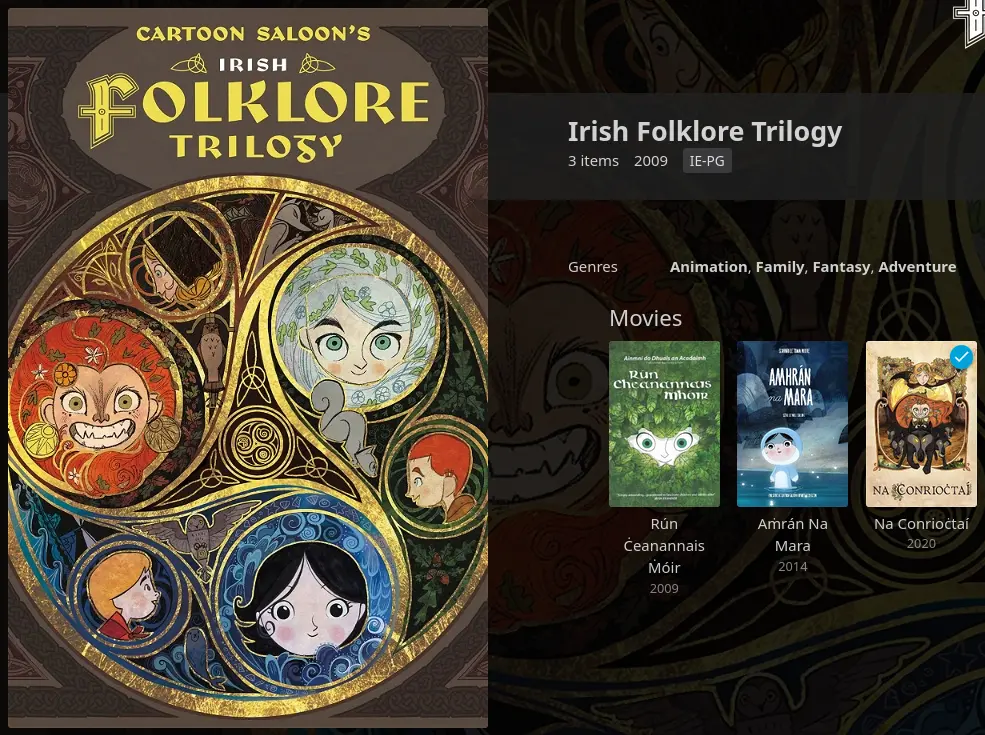
It has some other really nice features as well like telling you what time something will end at if you started playing now and letting you easily have multiple version of the same film under the same entry, letting you as easily select them as you would the right language for a movie with multiple audio tracks, so you can have both a bluray rip and the Morton Jankel cut of Super Mario Bros. together or the official black and white cuts of Fury Road or Johnny Mnemonic alongside the colour versions.
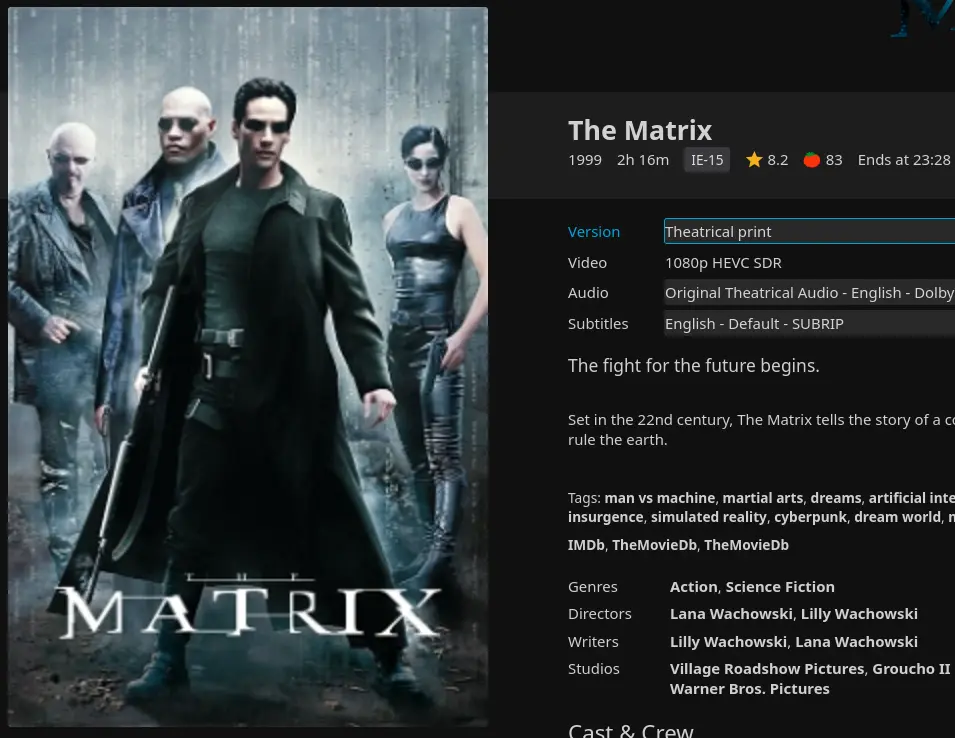
And of course you can also customise the artwork for all the different media categories, so mine look like this:
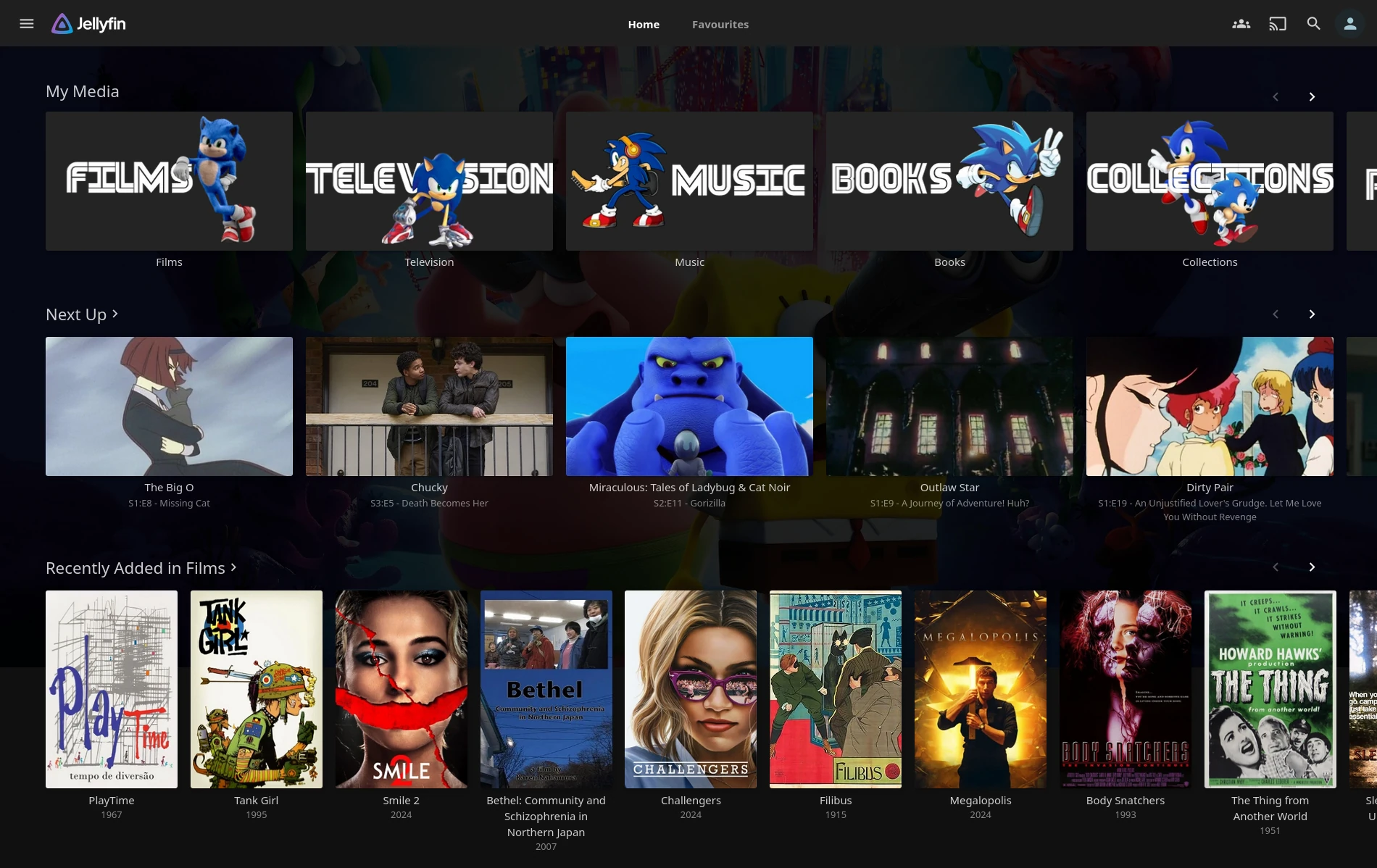
I adore that the Sonic Spinball options menu theme is now Surge’s unofficial theme song
https://www.youtube.com/watch?v=8uPJqSA-in4
Because of Nathalie Fourdraine’s video
https://www.youtube.com/watch?v=gVFGeuenBc4
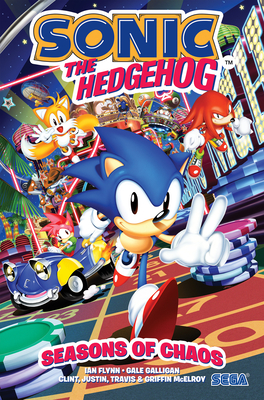
What voice I hear when I read dialogue in these comics varies a lot. When I read the mainline Sonic comics I usually hear Roger Craig Smith’s voice in my head as the hedgehog, but if it’s something where he’s a bit more immature it’s often Bryan Drummond. For Seasons of Chaos it’s Martin Burke from the O.V.A. with a matching Lainie Frasier Tails, but when I turn the page over to Sonic Learns to Drive he’s Jaleel White now. Sonic encompasses a bunch of different tones and styles and this book is a nice collection of some of the lighter stories with the younger versions of the cast.
Seasons of Chaos itself feels like it delivers on the promises of the Mega Drive miniseries that got cut short by the Archie Sonic the Hedgehog comic’s cancellation with an expanded, post-Sonic Mania cast who are also captured so perfectly in Aaron Hammerstrom and Reggie Graham’s art.
Sonic Learns to Drive is goofy fun that feels like it is hitting every single obvious joke to make but it lands them well.
Dr. Eggman’s Birthday and Amy’s New Hobby are two cute stories to end it out on, particularly the latter with its celebration of making your own little comics, which feels particularly meaningful given how much of the staff of the comics came from fan communities in the first place, and stands in stark contrast to how Sonic Boom and that era of Sonic media handled the idea of fan fiction with disdainful self-mockery.
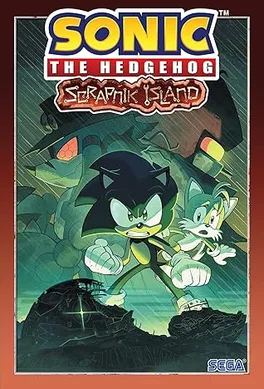
The story is straightforward but effecting and it is brought to life wonderfully in the art, especially Nathalie Fourdraine’s colouring and it’s a masterpiece in the use of light and darkness and it’s just lovely to revisit in in paper. And there’s just so many little details: The boarders changing based on the lighting throughout the comic, getting darker as they venture into the depths of the Death Egg and glitching out in time with Mecha Sonic.
There’s lots of great little moments throughout. I love when it briefly turned into Aliens everything turns green. And Mecha Sonic is just so cool.
I do think Sonic’s injured leg is something that he seems to just get over far too easily in the climax and really nitpicking things a small detail I noticed on reread: Sonic consistently walks putting his weight on his injured leg. I guess this is to make it more visible and prominent, and maybe easier to draw, but once I noticed it bothered me for the rest of the book.
I was in Forbidden Planet and decided it would be nice to have physical copies of some of the prettier Sonic one off stories and then I was told there was a 3 for 2 so I grabbed a random volume of reprinted Doctor Who Magazine comics as well
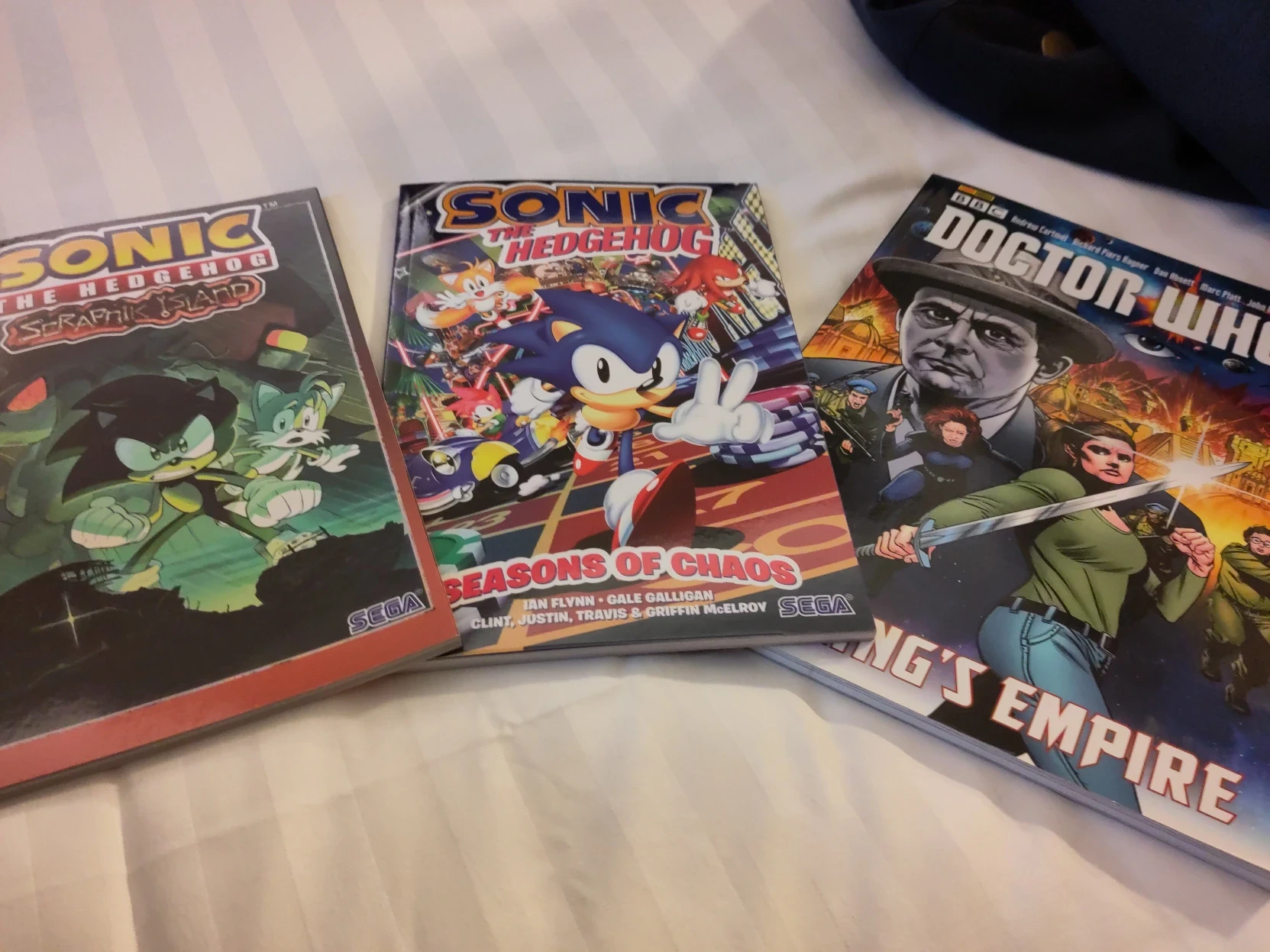
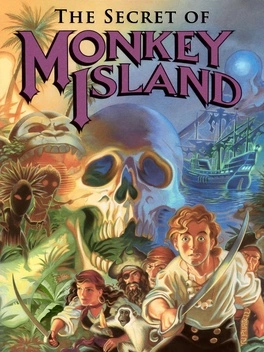
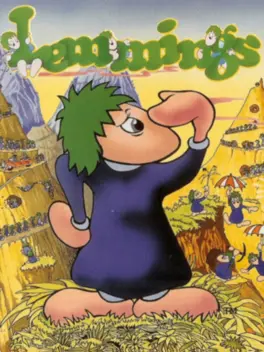
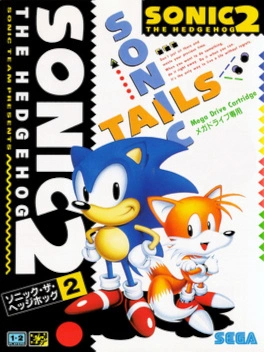
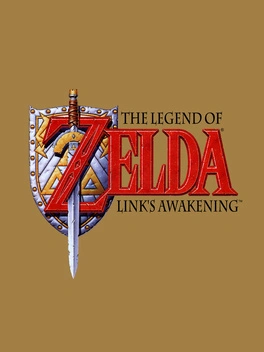
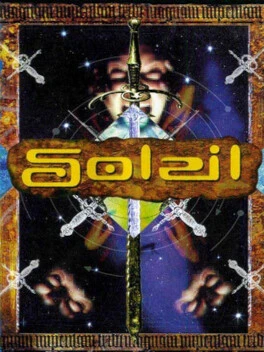
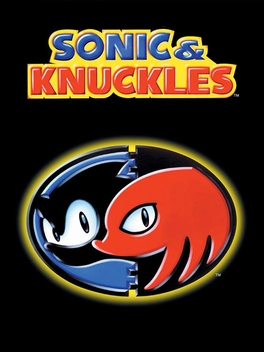
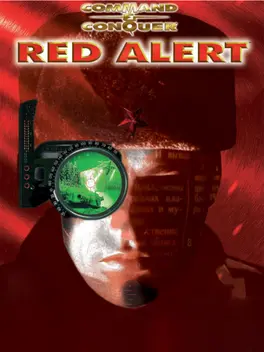
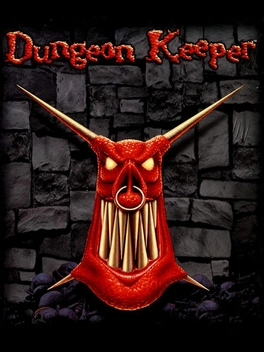
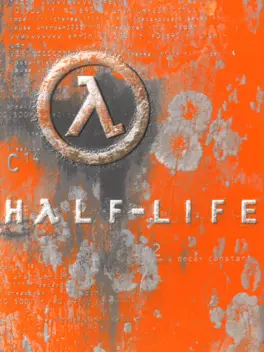
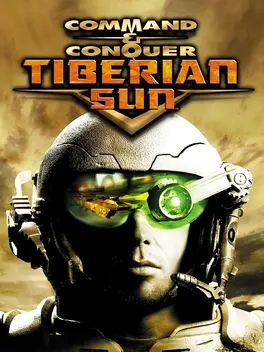
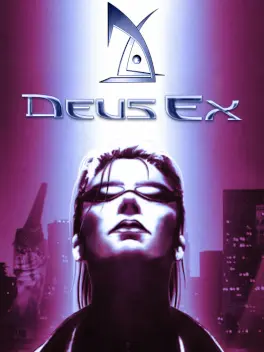
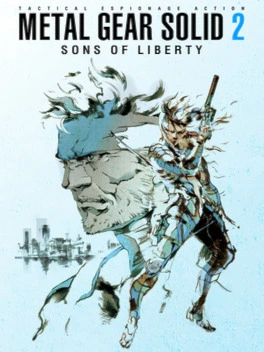
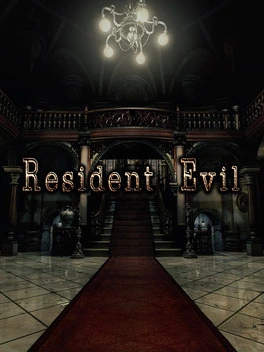
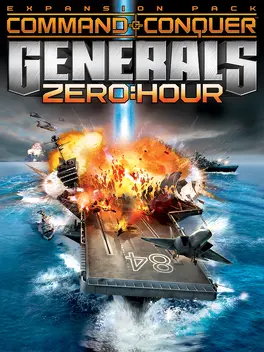
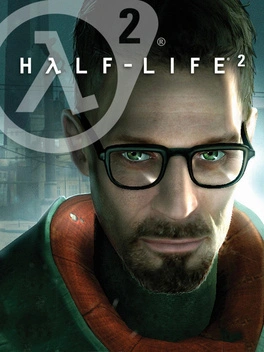
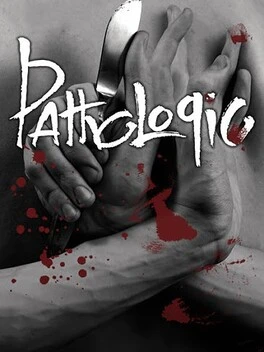
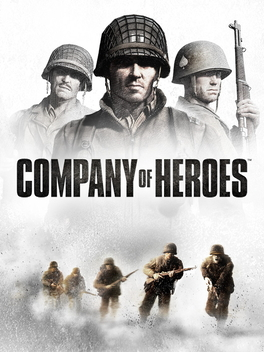
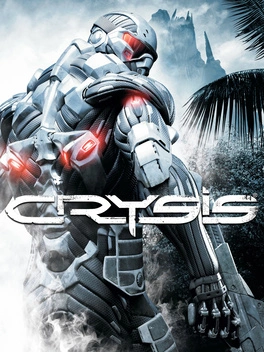
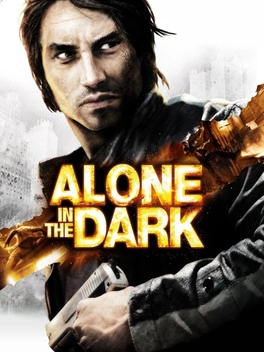
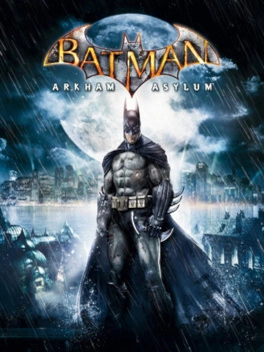
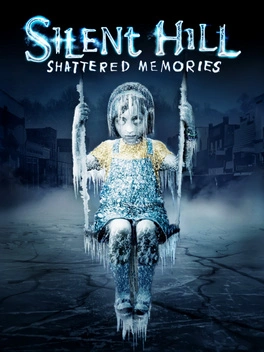
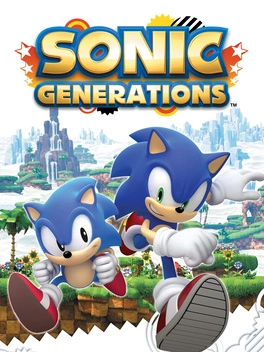
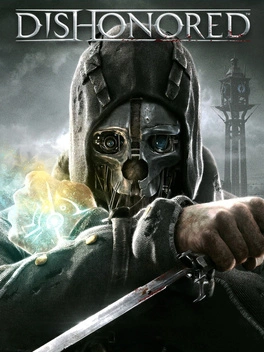
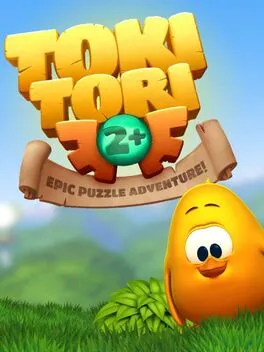
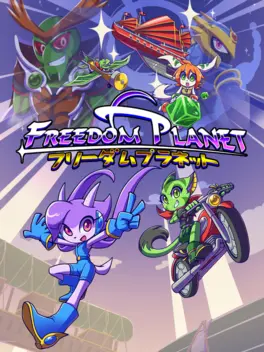
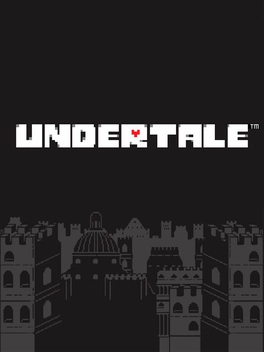
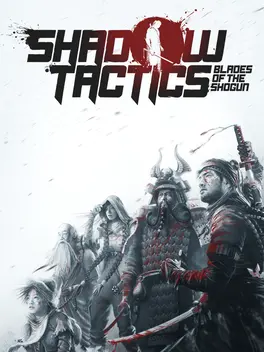
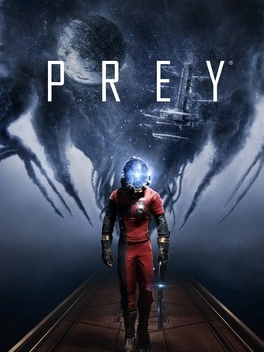
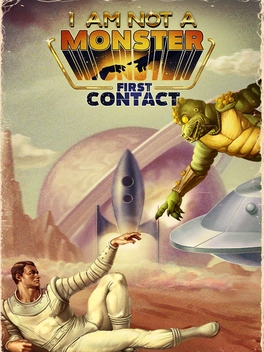
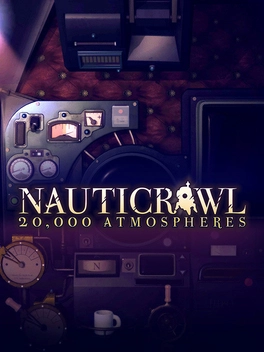
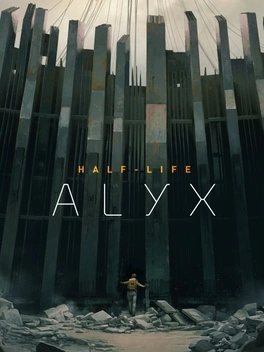
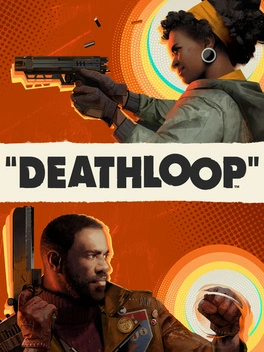
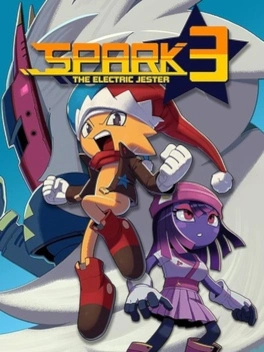
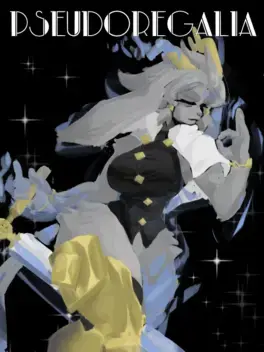
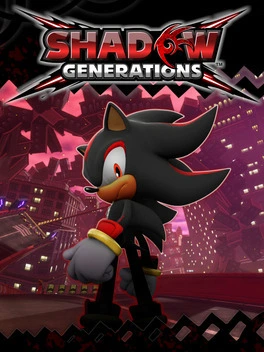
in Shadow Generations the reason that you can use Doom Blast on the mass-produced Death Egg Robots is that they have black arms
the great Sage, equal to Eggman
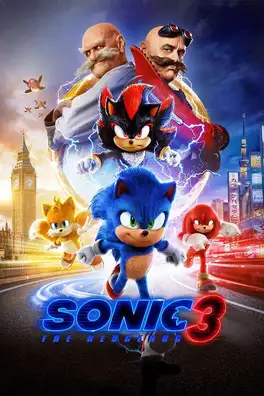
This film could maybe be salvaged but cutting out twenty minutes of Jim Carrey’s screentime and all the tone-ruining pop culture reference-based quips. That would remove most of the humour but also there is only one joke in the entire film that made me laugh so it wouldn’t be much of a loss.
That said, the dialogue and editing of this movie is already jarring enough as it is. Conversations do not flow at all, people spout things that have little relation to what was just said or have extended gag reactions that kill the pace of conversation before just being completely ignored. Actually, cutting those would probably also help.
The exception to this is when Jim Carrey is acting off Jim Carrey, which they seem to have put remarkably more effort into making feel natural and flowing with the characters interacting, hugging and playing off each other in a way that really sells physical presence despite it being the same guy twice, something that is not extended as much to the CGI animal characters who will very often not appear in frame with the people they are talking to at all. It’s a kind of maddening how much it feels like so much more effort was put into Jim Carrey sucking himself off.
On the bright side, more than the previous films we do get just Sonic, Tails, Knuckles and Shadow amongst themselves without having to have human characters around and that broadly works! I could have done with, again, less pop culture quips from Sonic and less generic Klingon from Knuckles but these characters are generally fun, they look good, and the action is often cool. This part of the movie actually works and Shadow’s storyline, simple as it is, hits, and the choices made to make Shadow and Sonic parallel each other more works quite well.
The climax would have been pretty great if we could have stayed with it for longer than thirty seconds of a Live & Learn riff at at time before cutting back to Jim Carrey playing generic Jim Carrey character talking to generic Jim Carrey character for several minutes, alas!
Hopefully if they make another one Carrey will not come back out of retirement again.
older people love to complain about how “no one” was autistic back when they were growing up but never consider the obvious fact that Sonic the Hedgehog hadn’t been invented yet
I got more made up than I have in months in order to go see a mediocre children’s movie


Because I like to keep my ebook library organised and American comics are a mess when it comes to sensible making a series straightforward to follow I have been maintaining my own reading order for the IDW Sonic the Hedgehog comics for a while. I have intended to add this to my site for a white and the current Sonic comic Humble Bundle seemed a good excuse to finally do it.
I intend to keep this as a live document that I update as new issues come out and have it as something that I can point to people when I try to convince them to read it and they don’t know where to start. If you want to start from the beginning that Humble Bundle has the first eight volumes for €12.38 and for €1 it has Scrapnik Island which is a great self-contained story to get a taste of the series with.
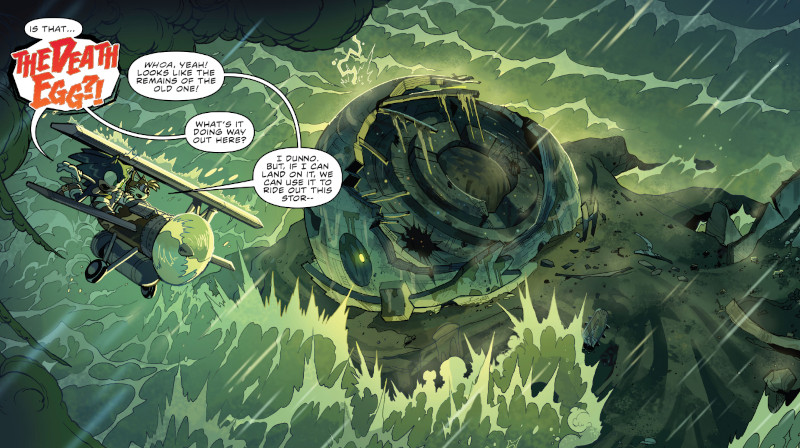
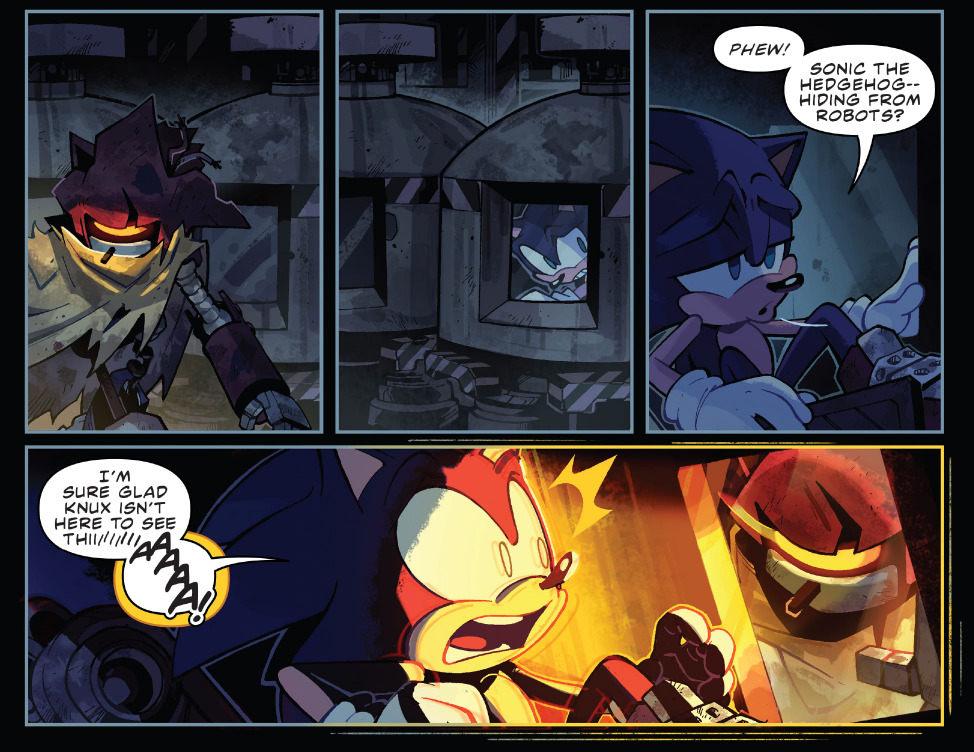
If you looked at my reading order you might have noticed I had the Tangle & Whisper miniseries in the middle of the eight volumes offered in the bundle but rest assured that they are perfectly understandable without it. It’s not until further along in the series that the story of that miniseries is really built on more.

This page was last updated .
I love the IDW Publishing Sonic the Hedgehog comics but they bear the marks of a common pox amongst American comic books: Little boxes containing editors notes telling you to go read something else if you want to know what’s happening. It isn’t a sprawl of crossovers with a shared universe like most cape comics but it still has spawned a bunch of miniseries and once-off comics that make reading it less straightforward than it should be.
If you want to dip your toes into the series without committing to a long, ongoing storyline I recommend Scrapnik Island, which was released as a four-issue miniseries or a single, paperback volume. It’s a standalone story with some neat horror vibes and absolutely gorgeous colouring and it only features Sonic and Tails from the main cast so you don’t have to know lots of characters going in. Seasons of Chaos is also a cute, standalone volume featuring the younger versions of the cast.
If you do want to jump into the series I keep my own reading order, shown in the big table below. This is not strictly by publication date or chronology, but trying to keep things in manageable chunks of numbered issues with occasional breaks to slot in the side stories, some of which do tie heavily back into the main plot.
If you want a reading order that is more faithful to release order there is Bobby Schroeder’s.
The IDW comics and mainline Sonic games take place in the same setting as each other with Ian Flynn being the head writer for both since Sonic Frontiers (2022). The comics start in the aftermath of Sonic Forces (2017), with the events of Sonic Frontiers happening sometime before issue #84.
The first column of the table divides the comic into broad story arcs. These are not official names and are mostly there to show useful jumping-on or -off points. The second column lists all the individual monthly issues and the third and fourth are the paperback volumes and hardback collections the stories are collected in, respectively.
Due to my reading order differing from the way that IDW have bundled issues together some volumes appear multiple times in the third column. If you are reading the volumes and following this guide just ignore the volumes when they appear crossed out.
The names of unreleased titles appear in italics.
| Arc | Issue | Volume | Coll. |
|---|---|---|---|
| Fallout | #1 | 1: Fallout! | 1 |
| #2 | |||
| #3 | |||
| #4 | |||
| #5 | 2: The Fate of Dr. Eggman | ||
| #6 | |||
| #7 | |||
| #8 | |||
| #9 | 3: Battle for Angel Island | ||
| #10 | |||
| #11 | |||
| #12 | |||
| Tangle & Whisper | Annual 2019 | Tangle & Whisper | 2 |
| Tangle & Whisper #1 | |||
| Tangle & Whisper #2 | |||
| Tangle & Whisper #3 | |||
| Tangle & Whisper #4 | |||
| Metal Virus | #13 | 4: Infection | |
| #14 | |||
| #15 | |||
| #16 | |||
| #17 | 5: Crisis City | ||
| #18 | |||
| #19 | |||
| #20 | |||
| #21 | 6: The Last Minute | 3 | |
| #22 | |||
| #23 | |||
| #24 | |||
| Annual 2020 | |||
| #25 | 7: All or Nothing | ||
| #26 | |||
| #27 | |||
| #28 | |||
| #29 | |||
| #30 | 8: Out of the Blue | ||
| #31 | |||
| #32 | |||
| Operation Remaster, Part 1 | Bad Guys #1 | Bad Guys | 4 |
| Bad Guys #2 | |||
| Bad Guys #3 | |||
| Bad Guys #4 | |||
| #33 | 9: Chao Races & Badnik Bases | ||
| #34 | |||
| #35 | |||
| #36 | |||
| #37 | 10: Test Run! | ||
| #38 | |||
| #39 | |||
| #40 | |||
| #41 | 11: Zeti Hunt! | 5 | |
| #42 | |||
| #43 | |||
| #44 | |||
| Operation Remaster, Part 2 | #45 | 12: Trial By Fire | |
| #46 | |||
| #47 | |||
| #48 | |||
| #49 | |||
| Imposter Syndrome #1 | Imposter Syndrome | ||
| Imposter Syndrome #2 | |||
| Imposter Syndrome #3 | |||
| Imposter Syndrome #4 | |||
| #50 | 13: Battle for the Empire | ||
| #51 | 6 | ||
| #52 | 14: Overpowered | ||
| #53 | |||
| #54 | |||
| #55 | |||
| #56 | |||
| Scraps | Annual 2022 | ||
| Free Comic Book Day 2022 | |||
| Scrapnik Island #1 | Scrapnik Island | ||
| Scrapnik Island #2 | |||
| Scrapnik Island #3 | |||
| Scrapnik Island #4 | |||
| #1 |
ⁿ/ₐ | ⁿ/ₐ | |
| Diamond Cutters | #57 | 15: Urban Warfare | |
| #58 | |||
| #59 | |||
| #60 | |||
| #61 | |||
| #62 | 16: Misadventures | ||
| #63 | |||
| #64 | |||
| #65 | |||
| #66 | |||
| Endless Summer | |||
| Halloween Special | |||
| Winter Jam | |||
| Spring Broken | |||
| #67 | 17: Adventure Awaits | ||
| #68 | |||
| #69 | 18: Extreme Competition | ||
| #70 | |||
| #71 | |||
| #72 | 19: Collision Course | ||
| #73 | |||
| #74 | |||
| #75 | |||
| Scattered Pieces | Annual 2024 | 20: Cause & Effect | |
| #76 | |||
| #77 | |||
| #78 | |||
| #79 | 21: Reprise (April) | ||
| #80 | |||
| #81 | |||
| #82 | |||
| #83 (December) | |||
| #84 (January) | ⁿ/ₐ | ||
| Chaotix’s |
There are a few comics that feature the “classic” versions of the characters that form their own separate prequel era, taking place somewhere between the Mega Drive Sonic games (and more recent games that use those designs like Sonic Mania and Sonic Superstars) and when the cast received their “modern” redesigns in Sonic Adventure. These are all pretty standalone and don’t need to be read in any particular order.
| Issue | Volume |
|---|---|
| Seasons of Chaos | |
| Tails’ |
ⁿ/ₐ |
| Amy’s |
|
| Knuckles’ |
|
| Fang the Hunter #1 | Fang the Hunter |
| Fang the Hunter #2 | |
| Fang the Hunter #3 | |
| Fang the Hunter #4 |
Sega also publishes promotional comics for upcoming games. These are generally released for free and act as prequels for the games they are promoting.
An independent comic anthology by the team who make the IDW comics.
An ongoing manga published monthly in Coro Coro Comic. It is drawn by Yuki Imada, who also made Jet Black Hedgehog, a loose adaptation of Shadow Generations. No official English translation of either comic has been published.
A promotional comic for the second Paramount Sonic the Hedgehog movie.
A crossover with the Justice League.
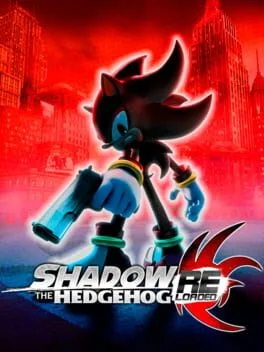
This is the skeleton of a functioning Sonic the Hedgehog game under this that you can sometimes catch a fleeting glimpse of before the mess of bad decisions piled on top of it re-asserts itself.
The addition of weapons is not inherently a bad thing, I enjoy the Gamma stages in Sonic Adventure, and having auto-lockon guns to blast stuff with as you run through a level is fun, and the way the rage mode gives you infinite ammo that lets you keep firing as long as you can destroy enough to keep your meter filled can be a cute little balancing act sometimes.
The weapons that don’t lock on are borderline unusable, though. Aiming is difficult at the best of times with these controls and rockets seem to have a habit of going straight through enemies and hitting a wall behind them and mêlée weapons are not something that works in conjunction with contact damage and knockback on hit. There is a reason that Freedom Planet excised those things from the basic formula.
But those are petty and mostly avoidable problems compared to the mission system. The Reloaded mod tries to smooth out some of the tedium but it does not solve the fundamental problems with it.
The levels are largely designed like Sonic the Hedgehog levels (and are often pretty fun when played like ones) with a linear structure but with some branching paths and shortcuts, shortcuts that you absolutely cannot use if you are trying to do missions because you will skip over a bunch of the sixty fucking individual soldiers you need to kill in order to do the dark mission so you can explore more branches of the story than the neutral pathway.
Absolutely no consideration seems to have been made for the mission system and branching story structure. The chaos control power is entirely useless to you if you are doing any mission other than the neutral one as it will simply skip you past your objectives. You must disengage with much of the games mechanics and rewards systems in order to experience more than half of the game.
The branching story structure that this is in service of doesn’t seem to have any consideration put into it at all either. The same cutscene will often play at the end of a level regardless of which mission you did, the CIA mainframe will be hacked regardless of if you did that mission or not, the events of any previous level are never mentioned because they all just exist in complete isolation and make no reference to anything that came before. Every character will act surprised that you are not doing what they say at all times regardless of if you have spent the entire playthrough so far ignoring them.
The path where you only do hero missions is really emblematic of this. Black Doom will continue giving orders that he apparently expects Shadow to obey till the end, despite Shadow not having listened to him once. But Shadow himself is similarly ridiculous on this path, which contains the infamous line “This is like taking candy from a baby, which is fine by me!” On the path where you only do the good missions! This path also has you fight the Black Bull boss twice. Surely it should have been obvious that this would be a path that many if not most players would end up doing and that it shouldn’t have the same boss fight twice on it.
Another path that stood out to me is the neutral path, which alternates level themes between ancient ruins and overgrown jungle tech base which made it feel like you were going backwards repeatedly with Glyphic Canyon, Prison Island, Sky Troops and then Iron Jungle. It really gives the impression that levels were made and then just randomly distributed between the different story paths without any thought whatsoever.
And of course the structure of this requires you to replay the same levels over and over in order to explore branches that you haven’t done yet. The Reloaded mod at least allowed me to not have to play Westopolis ten times just to unlock Last Story but the five times I had to play it to be able to at least play every level once was still far too much.
And yet it’s still sometimes actually quite fun. It’s very frustrating to have this core game that is enjoyable but with a mountain of shit piled on top of it that consistently gets in the way of satisfaction.
Expert mode almost fixes these problems, simply offering the levels one after the other, mostly just letting you play them by getting to the end without having to worry about missions, but then throws in some blatantly unfair changes to some levels on top of removing continues entirely.
Overall I still somehow feel positively about this game but I am not going to go back to it any time soon.

Hello! It’s time for me to be normal about Sonic the Hedgehog again. I have been thinking about the Death Egg Robot’s name.
Some background: The final level of Sonic 2 takes place aboard the Death Egg, an Eggman-themed parody of the Death Star. The final boss is a mech modelled after Robotnik himself.
This mech is not named in game but when it was reimagined as the first bossfight of Sonic Generations it was given a not terribly imaginative title: Death Egg Robot.
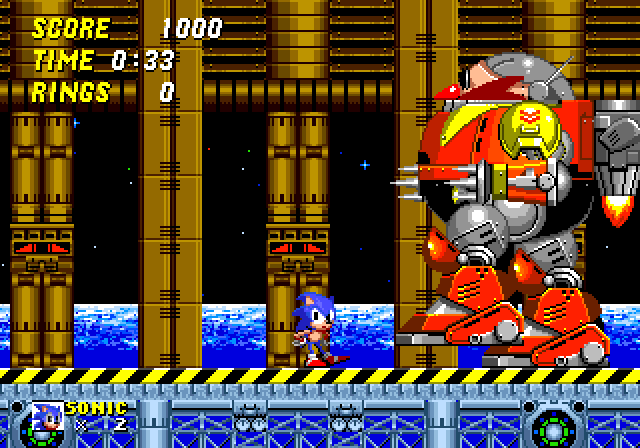
I don’t like this name and I grew to like it even less as this design got reused in future games and continued to be called “Death Egg Robot” even when it is completely divorced from the context of the Death Egg. It’s the first boss in Green Hill Zone in Sonic Mania and then there are the mass-produced, unmanned, cycloptic Death Egg Robots in Sonic Forces also without any apparent connection to the Death Egg1.
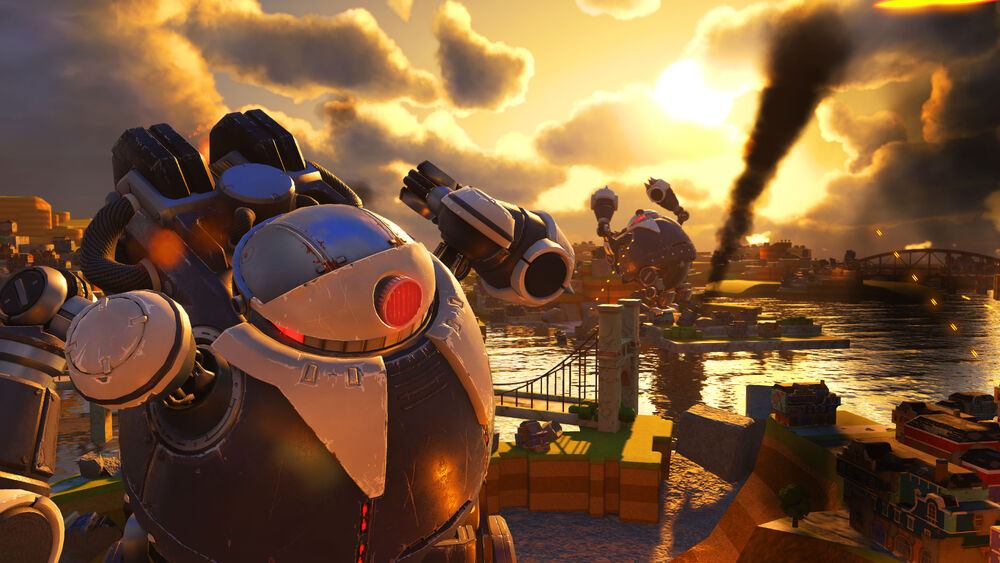
What got me thinking about this again? The other day I was doing the dishes while listening to a four hour playlist called Epic & Cool Sonic Music Compilation, as is my wont, when the track Battle with Death Queen came on.
The Death Queen is a giant Buzz Bomber, a huge bee robot. The game also features a giant crab robot chase sequence that is identified in the soundtrack as Death Crab.
And it occurred to me: Is the game trying to push “Death” as a general term for a class of giant robots? Is it rebracketing Death Egg Robot as Death Egg Robot?
Perhaps we are meant to take it that, in-universe, it is in fact just the giant, or “Death”, version of an Egg Robo. There are a lot of similarities between the two. The spelling is slightly different in English but in Japanese they are both エッグロボ.
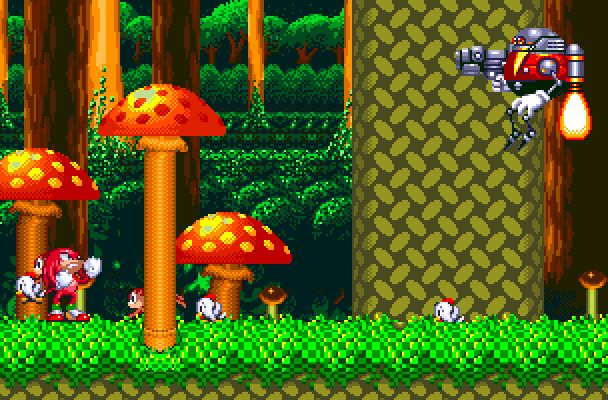
The Death Egg Robot debuted one game before the Egg Robos, but we could imagine that perhaps in-universe the Egg Robos were around first, just offscreen somewhere. Maybe Eggman is annoyed that Sonic and Tails associate the Death Egg Robot with the Death Egg at all. That’s just yolk folk etymology!
That said, I don’t know how to fit the final boss of Sonic Forces into this framework, which is inexplicably also called Death Egg Robot despite bearing almost no resemblance to the other Death Egg Robots and also having nothing to do with the Death Egg.
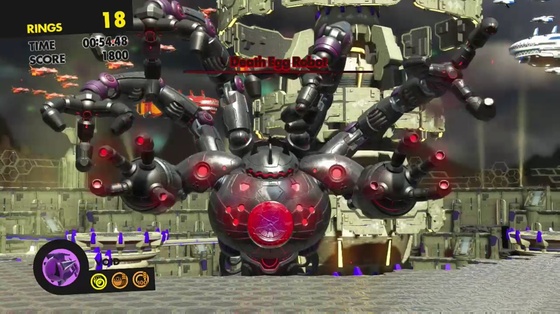
And then the real final boss, a giant robot chestburster that smashes its way out of previous phase of the bossfight is also inexplicably titled Death Egg Robot.
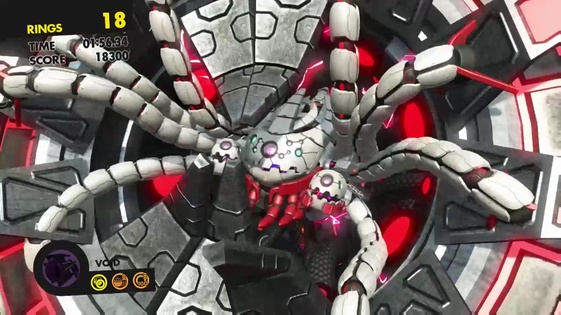
I don’t know how to fit this into any understanding of what Death Egg Robot is meant to mean.
The Death Egg does appear in Sonic Forces but the Death Egg Robots are not on it and no connection is made between the two. ↩
it’s funny and very 2000s how the president in Shadow the Hedgehog keeps calling the worldwide alien invasion “terrorists”

Translations area really interesting and fun. I’ve linked before to Twitch translating pokémon names into Welsh and something I’ve played at before is translating Sonic the Hedgehog character names into Irish.
It doesn’t come with quite the same punning potential as pokémon but the way Sonic character names tend to be ordinary nouns makes it interesting to try to translate, especially trying to capture the relationships between certain names or figuring out what to do with the weirder ones.
If the notes column is blank that means the name is just a straightforward calque of the name from English.
| English name | Irish name | Notes |
|---|---|---|
| Sonic the Hedgehog | Sonaċ an Ġráinneog | |
| Shadow the Hedgehog | Scáṫaċ an Ġráinneog | Shadowy. Also the name of the woman who trained Cú Ċulainn. |
| Silver the Hedgehog | Soilseaċ an Ġráinneog | Bright. Chosen to keep the hedgehog alliteration and rhyming going and works as a contrast to Scáṫaċ.1 |
| Miles “Tails” Prower | Myles “Eireabaill” na gCoileáinín | The miles per hour pun doesn’t work in Irish so I changed it to a reference to Myles na gCopaleen. Roughly Myles “Tails” of the Little Puppies. |
| Knuckles the Echidna | Ailt an Eicidneaċ | |
| Amy Rose | Émí Rós | A transliteration. Rós does means rose, though. |
| Rouge the Bat | Deargaḋ an Ialtóg | Rouge, but also blushing or glowing. |
| E-123 Omega | É-123 Óimige | |
| Cream the Rabbit | Uaċtar an Coinín | |
| Cheese the Chao | Cáis an Nord | Chao is obviously a word formed from removing the letter S from chaos. Anord is chaos (and ord is order) and I thought nord sounded better than anor and also that it would be fun than “an nord” would sound a lot like “anord”. |
| Blaze the Cat | Lasraċ an Cat | Flames/Flaming the Cat. |
| Big the Cat | Láidir an Cat | Strong the Cat. Chosen to keep the alliteration between Blaze and Big. |
| Honey the Cat | Lim an Cat | Mil is honey so I am spelling it backwards to keep the cat alliteration going even if that wasn’t actually present in her original name. |
| The Chaotix Detective Agency | An Ġníoṁaireaċt Ḃleaċtaireaċta Anordúileax | Anordúil means chaotic, ‑eaċ is a suffix which forms nouns with the sense of a person connected to the concept and I’ve subbed in an X like in the original name. |
| Charmy Bee | Meallaċ Beaċ | Charming |
| Vector the Crocodile | Veicteoir an Crogall | |
| Espio the Chameleon | Spiair an Caimileon | Spiaire means spy and with the E cut off the end it’s pronounced like “spear” which is cool. |
| The Babylon Rogues | Rógairí na Bablóine | |
| Jet the Hawk | Scaird an Seaḃaċ | |
| Wave the Swallow | Tonn an Ḟáinleog | |
| Storm the Albatross | Stoirm an Albatras | |
| Dr. Ivo “Eggman” Robotnik | Dr. Ivo “Uiḃeaċ” Robotnik | I thought it would work to leave his real name untranslated. Uḃ is egg and ‑eaċ is our favourite noun-forming suffix (or uiḃeaċ can just mean ovate). Fearuḃ or Uḃḟear would be more straightforwardly Eggman but I think that sounds bad. |
| Metal Sonic | Sonaċ Miotail | |
| Orbot | Glóbat | Globe + bot |
| Cubot | Ciúbat | Cube + bot |
It occurs to me just now that Scáṫaċ, Soilseaċ and Sonaċ could also work as translations of the three beam upgrades you get in Metroid Prime 2, considering that the Annihilator Beam is meant to be a sonic weapon. ↩
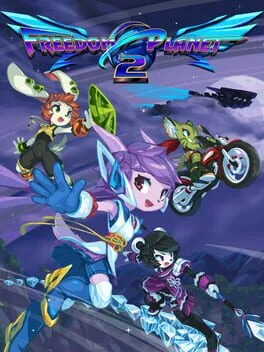
The most important thing this game layers onto the Sonic the Hedgehog template is versatile movesets for each character that gives huge breath for improvisation and recovery, allowing more room for keeping the flow going as one glides through levels.
The tools each of the four characters are also very different from each other, each resulting in their own style of movement and their own challenges in different levels.
The movesets also result in fun, expressive combat. The game has thirty-two levels and all of them have bosses to fight (though some levels are just boss fights) and some of them are really gratifying to bang one’s head against a few times till finally getting how to read and dodge and counter them.
A few other tweaks from its erinaceous roots like lack of contact damage or knockback help to keep the pace of both the running and fights smooth even if you do fuck up a bit and make the whole thing extremely satisfying.

This post includes plot details for Shadow Generations, Sonic Generations and Sonic Adventure 2
There is a part of Shadow Generations that I got unreasonably excited about, but it is going to take some explanation as to why.
There is a boss in Sonic Adventure 2 called Egg Golem. When you defeat it Sonic taunts it by saying “Nice try, rocky!” during the victory screen.
Also in Sonic Adventure 2, in a scene aboard the Space Colony ARK, Sonic the Hedgehog tries to fool Ivo “Eggman” Robotnik with a fake Chaos Emerald created by Miles “Tails” Prower, which Robotnik spots immediately.
These scenes don’t have much to do with each other, but in 2020 I watched videochess stream a Sonic Adventure 2 randomiser that not only randomises the levels and characters, but also all of the cutscenes, playing them in a random order and with every voice line for each character swapped with a random line of theirs from elsewhere in the game. The results are mostly nonsense but sometimes they line up in funny ways.
In particular a version of the fake Chaos Emerald cutscene plays where Robotnik says his line identifying the Chaos Emerald as fake early, to which Sonic responds by pulling out the emerald and saying “Nice try, rocky!”, apparently to the emerald itself. This resulted in several people watching, including myself, immediately declaring Rocky to be the name of the fake yellow Chaos Emerald. Eggman then tells Sonic to put Rocky down and back off.
Most of rest of the randomised dialogue is the usual ill-fitting nonsense, but the appropriate dialogue from Ivo with the Rocky line in the middle cemented this moment permanently in my mind. Rocky is my beautiful fake son and I want to protect him. And in Robotnik’s next line he insults Rocky and calls Rocky “sand” and says his machines hate Rocky and shoots my poor boy into space! It’s fucked up.
But Rocky does not have a large part in the Sonic series. The general idea of fake Chaos Emeralds gets revisited briefly in Sonic X where Sonic uses fake emeralds to turn into Dark Sonic and in the IDW comics Eggman tries to grow the “Eggperial City” using giant fake Chaos Emeralds. Also in the comics, specifically in Imposter Syndrome #2, a yellow gem that might be Rocky appears as a background detail on a shelf in Starline’s collection.
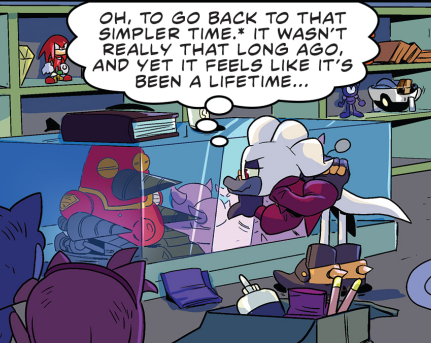
The real yellow Chaos Emerald appears throughout the series of course, including in Sonic Generations where it’s the emerald that you get for defeating Shadow the Hedgehog in a fight. And with Sonic Generations’ rerelease bundled with the new Shadow Generations campaign one of the many things that delighted me about the game is Rocky’s triumphant return and the silly way that it tied back into the original Sonic Generations.
In the promotional animated short for the game, Dark Beginnings, Shadow already has the yellow Chaos Emerald before the start of the game and holds on to it throughout the story. At the end of that short he flies to the Space Colony ARK and in an early cutscene in the game before being attacked by the Time Eater he finds Rocky still chilling on board the ARK and pockets it, now having both Rocky and the real yellow emerald.
Then, midway through the game, there’s a cutscene showing Sonic and Shadow’s fight from the Sonic Generations from Shadow’s perspective, where after losing he passes off Rocky to Sonic so that he can keep using the real emerald for his own fight.
It is, I admit, quite fan-wanky but I just admire pulling these disparate threads together and how this plotpoint is only possible because the fake emerald in Sonic Adventure 2 and the one in the Shadow rival battle in Sonic Generations both just happen to be the yellow one. And it means that Rocky is back! And he did such a good job! And he even retroactively gets to appear in Sonic Generations now too!


There is an incredible satisfaction in nailing a level of Sonic and/or Shadow Generations. It often feels almost as much like a rhythm game as a platformer, giving you that steady flow of obstacles to react to as you start off sight-reading and then eventually memorising the feel and flow of the stages, with plenty of alternate paths and shortcuts to tease out as well.
The contextual DOOM POWERS add extra layers to this for specific levels and Shadow turning into a squid now or using evil HM03 Surf is just kind of funny to see and Shadow’s chaos control power adds an interesting element of resource management to every stage as well, especially if you are trying to get the fastest possible speedrun time as, hilariously, when Shadow stops time he also stops the level timer.
The music is, like the levels, composed of banger remix after banger remix. I am listening to Space Colony ARK Act 1 as I write this and I will probably be listening to it a lot in the future.
The writing was also a surprisingly highlight. The plot is fairly simple but Ian Flynn uses the giant Sonic lore vault in his mind to weave different threads together in interesting and funny ways without coming across as fan wank. There’s a lot of references to past games but there’s usually some sort of point to it rather than saying “hey look at this thing!” and the supplementary material around the game with the Robotnik family history makes me hope Flynn or Evan Stanley get to explore Ivo Robotnik’s relationship to his family more in the comics or a future game. And the way the third boss was handled is so funny.
It’s good.
the vibe here really comes off as lesbian couple going on adventures and also their supportive friend Sonic the Hedgehog is there
which is, frankly, the ideal relationship dynamic
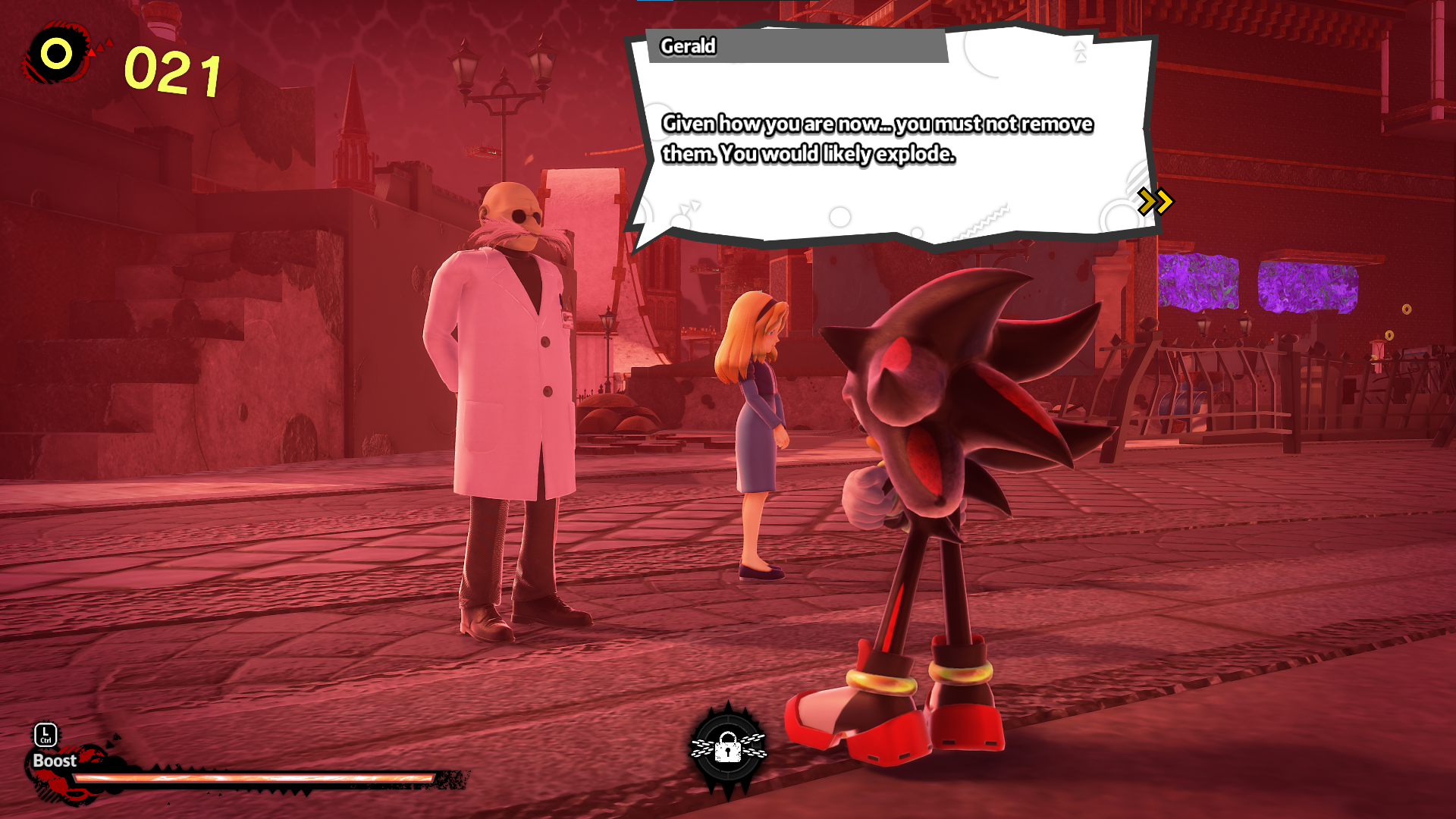
I cannot stop laughing at this line. (He is talking about Shadow’s inhibitor rings)
Game is great, though.


Snolf is ROM hacks made by Melon for the Sonic series that replaces the normal controls with golf-game mechanics, making it a difficult-to-impossible to control nightmare. It’s great! Melon’s Snolf series consists of Snolf: The Sonic Golf Experience, Snolf 3 & Knolf, Snolf CD: A Snolf in Time, Snolf Zero: The Prequel, Snolf: Tournament Edition and Snolf Mania Requiem Ultimax.
Snolf has been featured in Awesome Games Done Quick 2022 and Summer Games Done Quick 2023 where both times it was run by Dowolf.
I was bitten by the Snolf bug and made Snolf Robo Blast 2, the first 3D Snolf game. It can be found on the Sonic Robo Blast 2 message board.
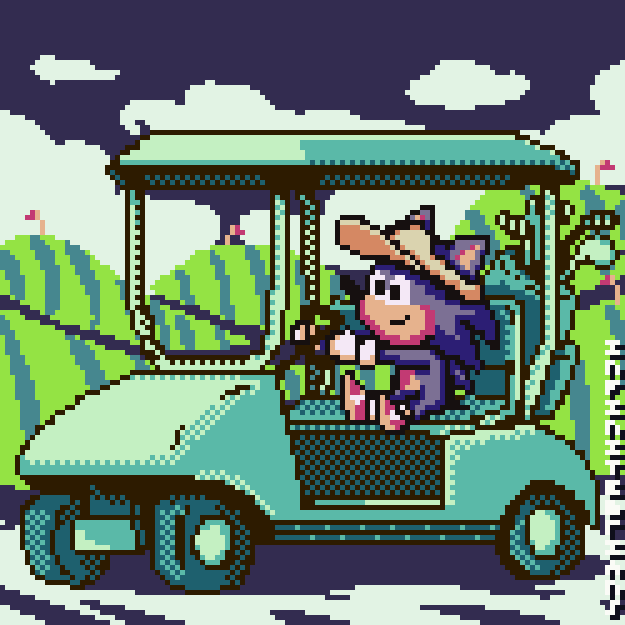
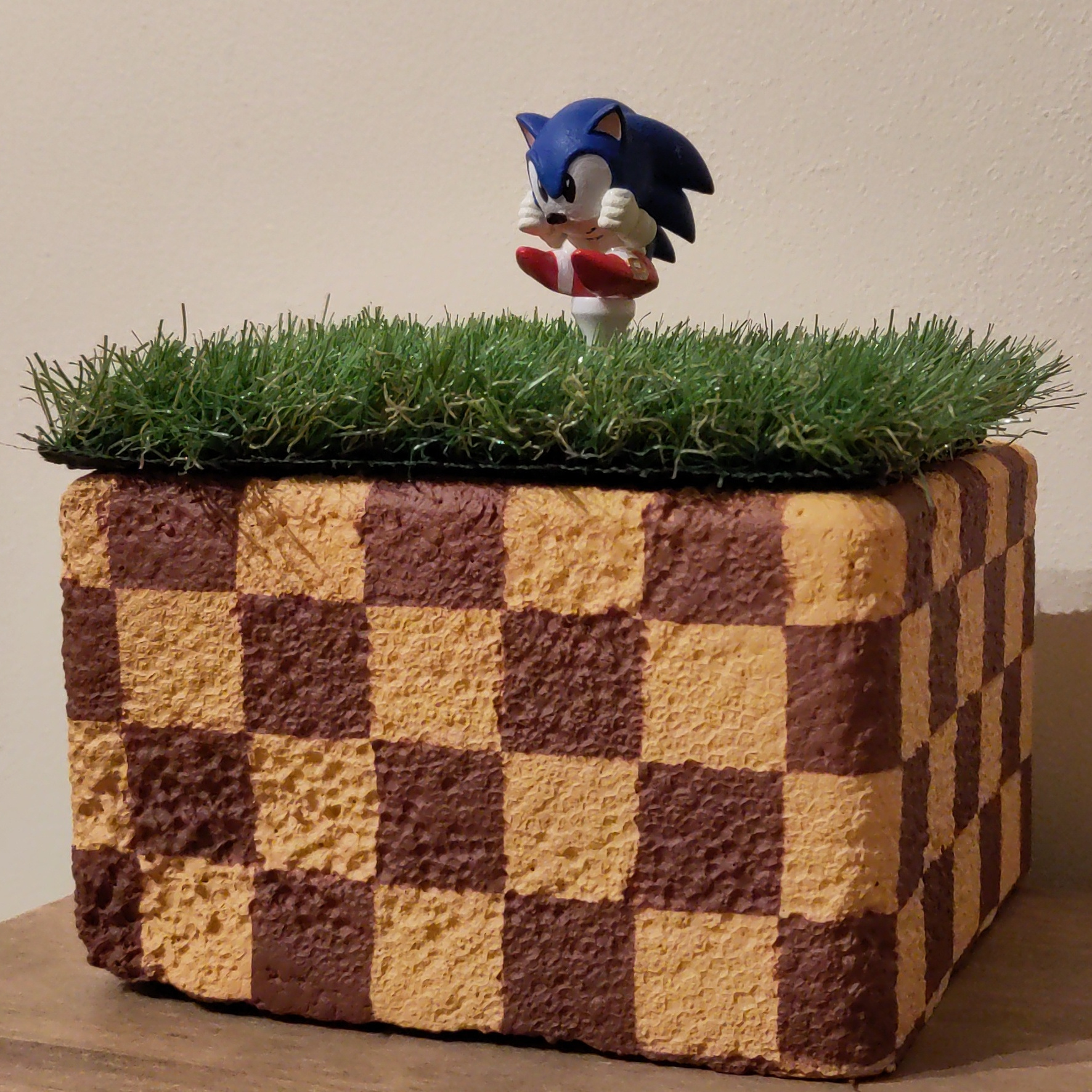
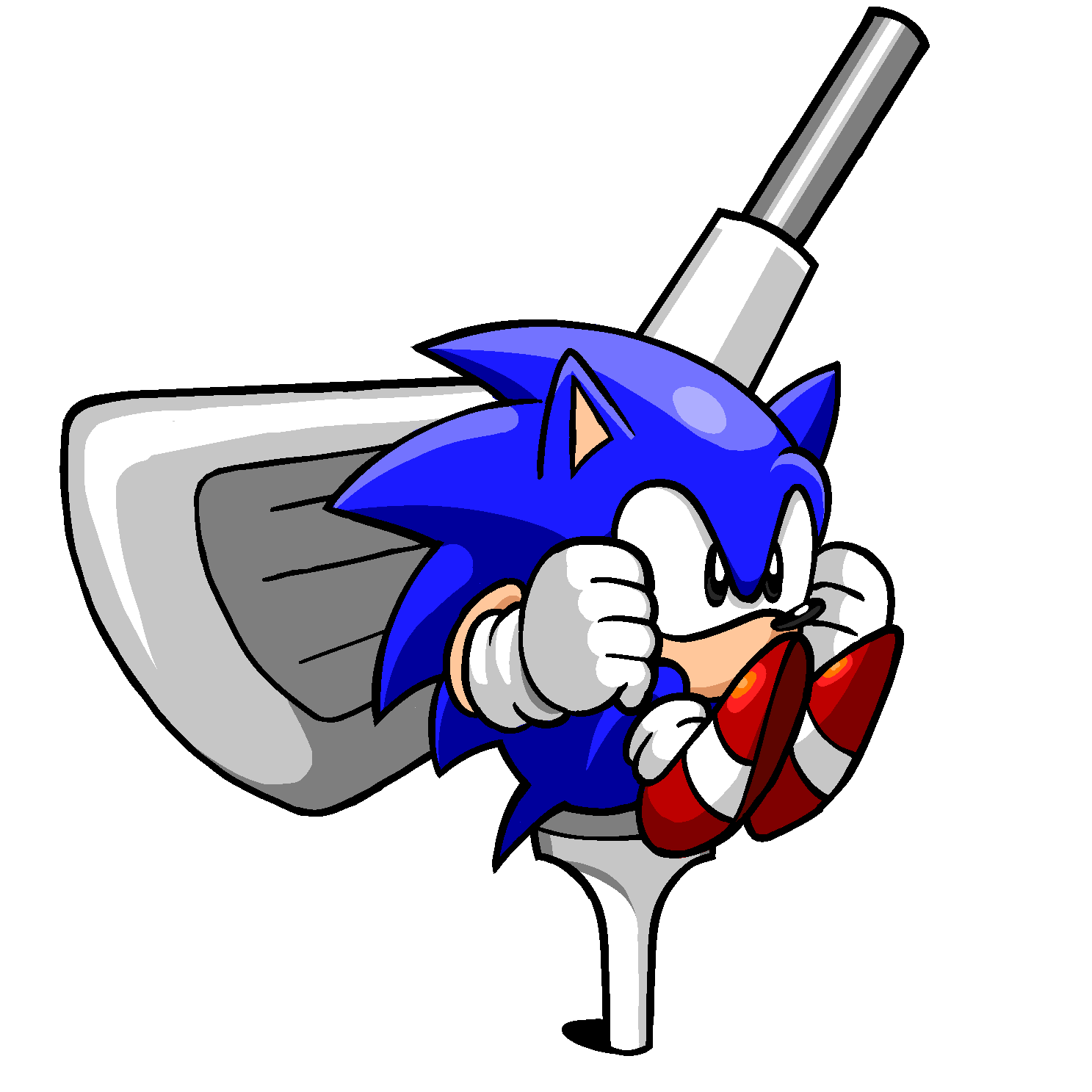
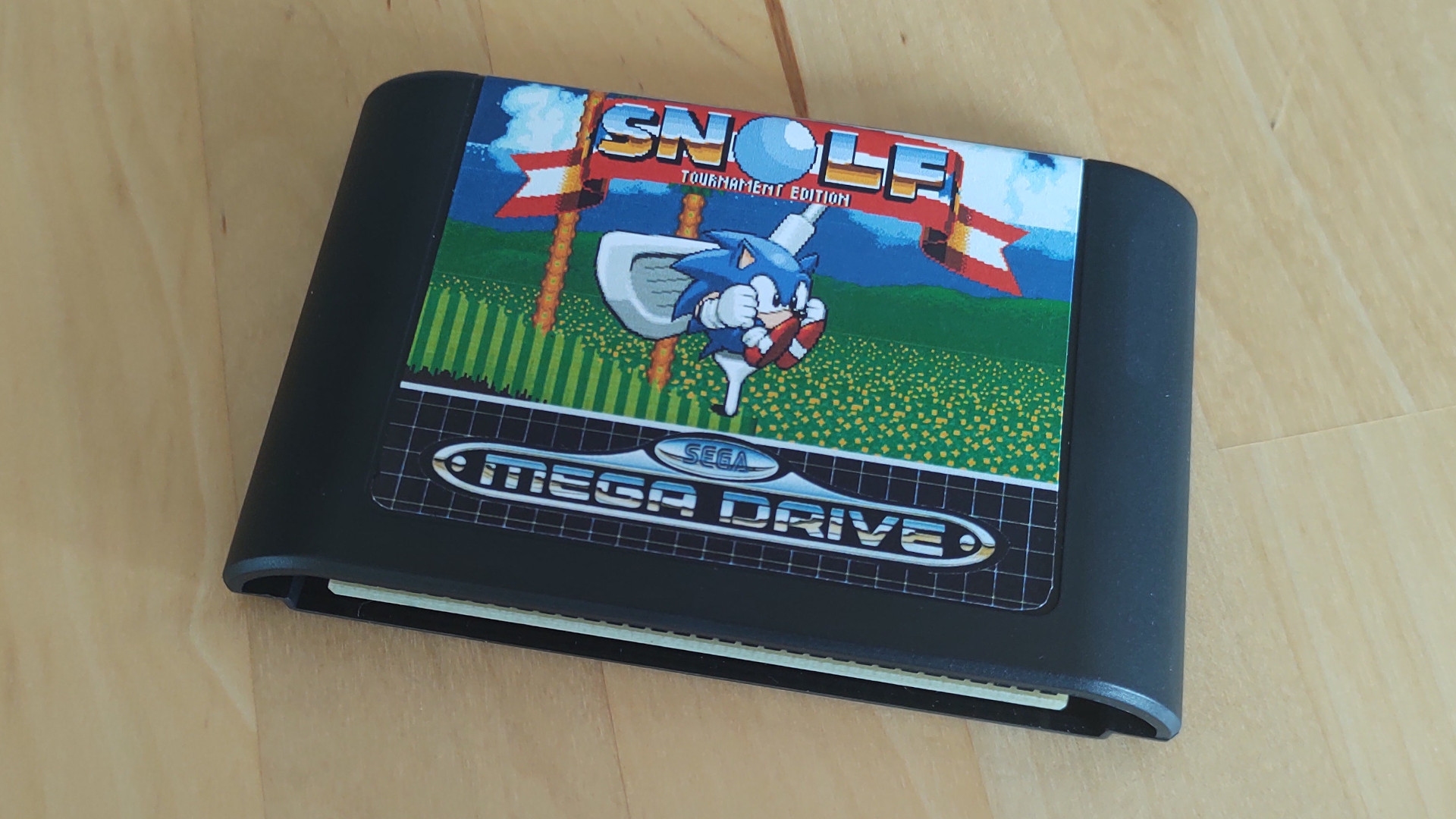

Leasú do Sonic Robo Blast 2 cosúil le Katamari Damacy.
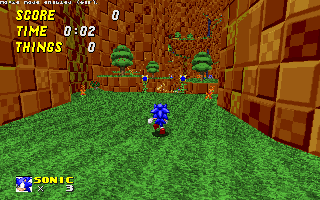
A mod for Sonic Robo Blast 2 that allows the player to pick up objects in the level similar to Katamari Damacy.

A diorama of a familiar-looking golfball.

Sonic model is a modified version of the Sonic model uploaded to Thingiverse by R1N6MAN.
Cuireann an leasú seo an fuaimrian Sonic the Hedgehog PAL i Sonic Origins in ionad an fuaimrian NTSC bunaiḋ.
Rith an leagan PAL de Sonic the Hedgehog ar an Mega Drive níos moille ná an leagan NTSC agus ḃí an fuaimrian níos moille freisin.
Má tá Hedge Mod Manager suiteáitle ar do ríoṁaire, is féidir leat an leasú a suiteáil trí an nasc seo a cliceáil. Seaċas sin is féidir leat é a íoslódáíl díreaċ.
Taifeadtaí le drsPascal as as Internet Archive.
A mod for Sonic Origins to replace the soundtrack for Sonic the Hedgehog with the PAL version.
The PAL version of Sonic the Hedgehog for the Mega Drive ran slower than the NTSC version, resulting in a distinctive, more mellow soundtrack. This mod replaces the music for the Sonic the Hedgehog portion of Sonic Origins with music from the PAL version of the game.
If you have Hedge Mod Manager installed you can install the mod by clicking this link. Otherwise you can downloaded it directly.
Recordings by drsPascal from the Internet Archive.
Leasú do Sonic Robo Blast 2 agus cliant Python. Scríoḃann breaṫnóirí Twitch teaċtaireaċtaí ċun tionċair a ḋéanaṁ sa ċluiċe.
As Twitch IO a rinneaḋ an cliant.
A mod for Sonic Robo Blast 2 for enabling Twitch chat interaction when paired with a Python client, allowing viewers to change the player character on the fly, spawn enemies and other objects to hurt or help the player, and more.
Client made using Twitch IO.


Script beag do Sonic Robo Blast 2. Taispeánann sí ainmċláir ṫar imreoirí i cluiċí ilimreoirí.

A small script for Sonic Robo Blast 2 that shows nameplates over players’ in multiplayer games.


Leasú caraċtair gailf do Sonic Robo Blast 2. Níl an imreoir ábalta a riṫ ná léim. Ní féidir leat ach galf.
Spreagaḋ haic ROM Snolf le Melon an leasú.
Portráid Snolf le Mars Gainsboro.

A character mod for Sonic Robo Blast 2 that turns the platforming levels into a game of high-speed mini-golf. The player’s ability to run and jump is replaced with a control scheme more similar to golf games.
Snolf must be launched from a stationary position and won’t be able to move again till they come to a rest.
Inspired by the original Snolf ROM hacks by Melon.
Character portrait by Mars Gainsboro.